|
October is a beautiful time of year filled with fall festivals, hayrides, and dazzling mum displays. The trees are bursting with color, and the crisp smell of autumn is in the air. It is also Halloween month, a holiday that is enjoyed and celebrated by both young and old. There are pumpkins to carve, costumes to make, parties to plan, and of course, let’s not forget scary haunted houses, spooky trails, and ghost tours! Halloween is also a time for lots of fun creativity in the kitchen and making many delectable treats for children. Of course, adults enjoy holiday treats as well, especially beverages. If pumpkin lattes and hot apple cider aren’t your thing, there are more “spirited” Halloween-themed drinks such as Poison Apple Cocktail, Boozy Witch’s Brew. Black Devil Martini and Zombie Slime Shooters! But if you prefer sipping wine, please step into my "Hallowine" cellar, if you dare, and I’ll tell you a few tales! Casillero del Diablo Once there was a winemaker named Don Melchor Concha y Toro who founded the Concha y Toro winery in Chile in 1883. He started his winery with grape varieties that he brought back to Chile from the Bordeaux region of France, with which he made exquisite wines. Don Melchor reserved an exclusive batch of these wines for himself that he kept under lock and key. According to legend, these wines continually disappeared from the cellar. So to stop the theft of these wines, Don Melchor spread a rumor that the devil himself lived in the cellar guarding the wines. Everyone became terrified, and some people claimed that they had seen the devil. The rumor worked, the thefts stopped, and Don Melchor continued to enjoy his wines. To this day, the cellar is known as the “The Devil’s Cellar” and remains protected…forever! Casillero del Diablo, which means “devil’s locker” in Spanish, is a legendary brand that is part of Concha y Toro’s portfolio with the “devil” logo on every bottle. The cellar is located in Pirque, close to Santiago, and is open for tours. Here are two wines from Casillero del Diablo to add some devilish fun to your Halloween. Casillero del Diablo Reserva Red Blend DO 2018 The grapes for this red wine are a mysterious blend of Syrah and Cabernet Sauvignon sourced from Rapel Valley. The wine is shrouded in secrecy about its length of aging, but rumor has it that it spent about ten months in French oak. But there is no mystery as to this wine’s aromas and taste! Nose: Dark berries, black cherry, fig, spice, and vanilla Palate: Juicy plum, dark cherry, spice, dark chocolate, and soft tannins Alcohol: 13.5% SRP: $11.99 Pair with grilled meat, game, seared tuna, hearty stews, and pasta. Casillero del Diablo Reserva Cabernet Sauvignon 2019 The grapes for this wine are sourced from Central Valley D.O. Its aging remains a secret closely guarded by the devil in the cellar! Nose: Intense aromas of dark berries, cherries, plum, floral, and spice. Palate: Aromas spill onto the palate with a touch of anise. It is beautifully balanced with firm tannins and dark chocolate and plum lingering on a long finish. Alcohol: 13.5% SRP: $11.99 Pair with hearty or spicy cuisine, grilled meat, aged cheese, or stews. Flora Springs Flora Springs is a family-run winery located in Napa Valley, CA, founded in 1978 by Jerry and Flora Komes. Today, their son John and daughter Julie are the proprietors of the estate, and Julie’s husband, Pat Garvey, is the vineyard director and proprietor. The property is situated among vineyards planted in the late 1800s, now part of the estate vineyards. When the Komes bought the estate, it came with a “Ghost Winery.” originally constructed in 1885. “Ghost Winery” is a term used to describe any winery between 1860 and 1900 that was non-functional and in disrepair in the early 20th century due to the Great Depression, phylloxera, and Prohibition. According to Flora Springs, “Before 1919, when Prohibition began, there were an estimated 713 winery businesses in California. Following its repeal 14 years later, only 40 wineries were left. This resulted in a wave of abandoned wineries throughout the next several decades. Many wineries of the time disappeared forever; others were left in ruins.” After his parents bought the property, John completely renovated the old stone winery into a home and lives there with his wife, Carrie. In honor of Flora Springs history, every year around Halloween time, they bottle a small amount of estate-grown Malbec from the vines in front of the old winery as a tribute to the estate’s “ghostly history.” The label is a hand-drawn etching of the historic stone cellar. Ghost Winery Malbec 2019 This wine is 100% Malbec and aged 18 months in French (75%) and American (25%) oak barrels. Nose: Plum, cherry, berries, baking spice, and figs Palate: Lush dark berries, black plum, cocoa, fig, spice, silky tannins, and a long finish. Flora Springs says, “It’s hauntingly delicious.” Alcohol: 14.2% SRP: $60 Pair with stews, hearty soups, grilled meat, seared tuna, or aged cheese. In addition to the Ghost Winery Malbec, Flora Springs produces a one-of-a-kind Halloween-themed label and limited edition wine. Every year since 2008, consumers look forward to these whimsical Halloween wine bottles. This year, General manager and third-generation Nat Komes collaborated with New York-based artist Marc Sasso to create the All Hallows’ Eve Cabernet Franc label. The result is an image of witches dancing in the moonlight while brewing a special potion. Hmm, I wonder what that could be! All Hallows’ Eve Cabernet Franc 2019 The grapes for this 100% Cabernet Franc are sourced from a small block of the family’s estate vineyard in Rutherford. It is aged 18 months in French (80%) and American (20%) oak barrels. Nose: Red fruit, baking spice, cherry, and a hint of floral. Palate: Juicy notes of black raspberry, dark cherry, chocolate, spice, and a touch of sour cherry on a long finish. It is a balanced and well-structured wine. Alcohol: 14.2% SRP: $60 Pair with grilled meat, fowl, seared tuna, or a Halloween chocolate treat! And what would Halloween be without adding a little “magical” sparkle to the festivities? Bottega SpA Bottega SpA is headquartered in Bibano, Treviso, in the Veneto region of northern Italy. It is here that the company produces Prosecco DOC and grappa. In addition, they have another winery in Conegliano for the production of Prosecco DOCG. Bottega also manages wineries in Valpolicella and Montalcino. Bottega’s motto is “Fatto A Mano,” which means ‘handmade.” Its mission is to work and achieve the highest levels of quality, design, and sustainability. All of the bottles are beautifully designed and made of hand-blown Venetian glass in Bottega’s glass factory. Academia Prosecco Rainbow Collection is a brand that celebrates the art of Venetian glassmaking and the city’s festive carnival atmosphere. Each colorful bottle of this collection contains Prosecco DOC. There are many colors to choose from, and the bottles can be combined to “create a rainbow of emotions.” In addition, one can mix and match the colors to celebrate specific holidays or events. Bottega SpA has no ghost stories to tell, but they have certainly gotten into the “spirit” of Halloween with their orange and black Halloween pack of Prosecco DOC. Prosecco Spumante DOC Brut
Made with 100% Glera, these grapes are hand-harvested from manually maintained and sustainable vineyards in Treviso Plains. This wine is produced using the Martinotti (Charmat tank) method. Nose: Floral, apples, citrus Palate: Apple, pear, pink grapefruit, and a hint of floral with a creamy mouthfeel, fine bubbles, and apples lingering on the finish. This is a fresh and lively sparkling wine. Alcohol: 11% SRP: $42 (Halloween pack of two) Pair with a charcuterie board, light salads, fish, risotto, or enjoy as an aperitif. Although Halloween is a great time to let one’s imagination run wild and tap into one’s creative spirit, all of these wines need no special occasion to open and enjoy! Whatever you choose to sip on Halloween, I hope you have some juicy ghost stories to pair with it! Happy Hallowine! Cheers! Penina This article was originally published on Santé Magazine. To leave a comment or if you have an inquiry, please contact me at [email protected] “Mendocino is unique, rugged and refined, a place that draws passionate people. I’m pleased to be a part of that passion at Saracina.” -Alex MacGregor, Lead Winemaker Located in northern California, Mendocino County AVA (American Viticultural Areas) is one of the most northern wine regions in the state and is north of Sonoma. There are ten diverse appellations with two distinct climate zones divided by the Mendocino Range. Mendocino tends to be defined as “coastal or inland,” and the ocean’s cooling effects vary on the vineyards. My focus today is on Hopland, an area in the southern part of the county and about 30 miles north of Healdsburg. Saracina Vineyards is a 250-acre family-owned ranch situated in Hopland along the Upper Russian River. Saracina is a Certified California Sustainable (CSWA) winery and vineyards with 140-year-old olive trees, vegetable gardens, and beehives. Forty acres are devoted to wine vineyards with six distinct parcels and diverse soils including rocky, black clay and gravelly loam. The climate is composed of wet winters and dry summers, with a substantial diurnal shift from warm days to cool nights. Saracina was founded in 2001 by a well-known husband and wife team in the wine industry, John Fetzer and Patty Rock. They named the estate ‘Saracina’ after a centuries-old farmhouse and vineyards in Tuscany where John and Patty spent their honeymoon. They brought winemaker Alex MacGregor on board in 2002. Alex, who brings a wealth of knowledge, enthusiasm, and passion to winemaking, has left no stone unturned when it comes to “pushing the limits.” He loves working with old vines, using native yeast fermentations, hands-off elevage (Elevage by definition is the process of nurturing the wine from fermentation to barrel to bottling.), and unfiltered bottling. Saracina’s handcrafted, limited production is testimony to the quality of their wine and respect and dedication for the land. In 2018 Marc Taub, the third generation of the Taub family and owners of Palm Bay International, a leading wine importer, became proprietor of Saracina Vineyards. Marc continues to maintain the values and quality of Saracina that began with John and Patty. Several months ago, I had the opportunity to taste five Saracina wines with Alex MacGregor at a Zoom wine tasting event. Saracina Sauvignon Blanc 2019 This 100% Sauvignon Blanc is sourced from two vineyard sites, Lolonis and Chevalier vineyards. The Lolonis vineyard has some of the oldest Sauvignon Blanc vines in the country, planted in 1942. The grapes were hand-harvested and barrel fermented in neutral French oak with native yeast. The nose offers beautiful aromas of melon, citrus, and white stone fruit. It is well structured with floral, grapefruit, white peach, minerality, and vibrant acidity on the palate. Alcohol: 13.2% SRP: $23 Saracina Unoaked Chardonnay 2019 This wine is 100% Chardonnay. Grapes are sourced entirely from 40-year-old vines at the Saracina ranch in soils influenced by the Russian River. It was cool tank-fermented with four months on lees. The wine has lovely aromas of white stone fruit, pear, citrus, and apple. The palate offers pear, sweet apple, and crisp lemon with nice acidity and a good, clean texture. Alcohol: 13.2% SRP: $23 Saracina “Skid Row” Malbec 2018 The grapes for this 100% Malbec were planted in 1999 in Skid Row Vineyard in the westernmost block on the Saracina ranch. The plant material is the original Bordeaux clone 4 and is the lowest-yielding commercial Malbec available, producing concentrated fruit. This wine is aged in thin-stave French oak barrels (15% new wood) for 19 months. “The vineyard was named “Skid Row” for the tracks carved into the surrounding hillsides in the late 19th and early 20th centuries by donkeys dragging logs down to the vineyard site, where they were collected to fire the furnaces for hop barns in the course of making beer.” Alluring aromas of dark berries, dark cherry, plum, and a hint of spice set the stage for this delicious wine. The palate offers lush berries with a dark jammy feel, baking spice, silky tannins, and a lengthy finish. Alcohol: 14.2% SRP: $30 Saracina “Old Soul” Red 2018 “Old Soul Red by Saracina is a nod to Mendocino County’s adventurous history of exploration and discovery.” This wine is a blend of 43% Zinfandel, 31% Malbec and 26% Petite Sirah. The Zinfandel is sourced from two vineyards sites, the Chapman vineyard in Redwood Valley and the Sawyer vineyard that sits at 1000’ feet elevation. The Malbec is sourced from the Saracina estate, and the Petite Syrah comes from the Saracina estate’s steep hillside and the Niemi vineyard with 20-year-old vines. The wine was aged in 10% new thin-stave French oak and four-year seasoned American oak for 18 months, Aromas of cherry, berries, and spice segue onto the palate with additional notes of rich ripe fruit, plum, and a hint of oak. Soft tannins balance nicely with acidity, and the finish is long and lush. Alex remarked, “This is a sophisticated and ‘more rustic’ peasant wine. The blend changes every year.” Alcohol: 14.7% SRP: $25 Saracina “Winter’s Edge” 2018 This red blend is 50% Garnache, and 50% field blend (Grenache, Carignane, French Colombard). “This unique old vine field blend is vinified from grapes picked from two single vineyard sites on November 6th, 2018 (post frost). From the Casa Verde vineyard, planted in 1944, we harvested a field blend of old vine Carignane, Grenache, and French Colombard. Casa Verde is dry-farmed and certified organic with 75-year-old, head-pruned vines planted on alluvial loam soils. This incredibly unique fruit is complemented by a percentage of Grenache from the Niemi Vineyard, where red soils with volcanic influence yield grapes with a plush and jammy character that adds weight, texture, and ripeness to the final blend.”- Saracina vintage notes. The free-run, drained juice underwent native malolactic fermentation that took 12 months to complete. The wine was then aged for 19 months in older Francois Freres barrels. This is a vibrant, bold, and juicy wine with aromas of rose, ripe red fruit, and baking spice. The palate is layered with sour cherry, pomegranate, raspberry, and a touch of pepper. Mild tannins, brilliant acidity, or, as Alex says, “crunchy acidity” lead to a long finish to savor it all!
Alcohol: 14.5% SRP: $30 The white wines are perfect for aperitifs or pair with oysters, seafood, or spicy Asian cuisine. Enjoy the reds with a charcuterie plate, grilled meat, fowl, or hearty stews. Enjoy these expressive wines all year long. I guarantee that you will taste the passion and dedication in every sip! Until next time… Cheers! Penina To leave a comment or if you have an inquiry, please contact me at [email protected] It was June of 2016 while attending the Descorchados NY South American wine event that I first met Felipe Ortiz. Felipe is Chief Winemaker for Casa Donoso located in the Maule Valley of Chile. I remember being caught up in his enthusiasm and passion as he introduced me to his very intriguing wines. Felipe said that the Maule Valley had a “multiplicity of characters” and then gave a general description of the wines. “White wines are very fresh with mineral traces, in particular our Sauvignon Blanc. Red wines with short maturity cycles show a very good balance between alcohol and acidity, like Merlot and Cabernet Sauvignon. And above all, a nice and silky Carménère is a tricky and demanding variety which is hard to mature properly in other valleys”. One year later we met again at the same event. And once again, my palate was treated to Felipe’s expressive wines. We have stayed in touch throughout the last few years with the hope that I might visit Casa Donoso one day. I have not had the opportunity to travel to Chile yet, and now with travel on hold for most of us, it is unlikely that I will visit there any time soon. So, Felipe sent Casa Donoso to me with a bountiful shipment of wines and a candid long-distance conversation. Chile is a long and narrow country bordering the Pacific Ocean to the west, and to the east lie the Andes Mountains, which is among the world’s highest mountain range in the Western Hemisphere. Chile spans 2700 miles running from north to south and is only 100 miles wide. Its numerous wine regions are then divided into sub-regions. Due to the expansive range of terroirs, the style of wines made here has an equally wide range, with most of the climatic variations in the wine-growing regions running from east to west due to the influence of the ocean and mountains. Casa Donoso is located in the sub-region of Talca, which is in the heart of the Maule Valley and is part of the DO Central Valley region. Maule Valley is the largest wine-producing region and also the oldest wine-growing region in Chile. Some of the countries’ oldest vines that were planted over 100 years ago still exist here. It is also one of the southernmost wine-growing areas of Chile. The soils throughout Maule Valley are of sedimentary origin, such as sandy and deep clay loam and the climate is Mediterranean. The main grapes grown here are Cabernet Sauvignon, Carménère, Merlot, Carigñan, Sauvignon Blanc, and Chardonnay. Casa Donoso was created 30 years ago by a group of French investors who saw the potential of this unique terroir. They made it their mission to focus on the production of premium wines from the onset. They were among the first foreign investors to introduce modern technology to the winemaking industry in Chile. In 2014 the Selume family, a national group, took over. Felipe said, “They continue to follow the line of quality in the wines. We have a French heritage from the beginning as well as a new world winemaking vision, which allows us to generate high-level wines. Casa Donoso is a classic and elegant concept in the Maule Valley.” Felipe Ortiz joined Casa Donoso in 2008. I asked Felipe how he became interested in winemaking and where he received his training. Felipe: “I think my first approach to the wine world was thanks to my father. He always showed me varieties of wine pairings with food when I was young. Then at the university, I studied Agronomy Engineering in Chile. To be a winemaker here, you must first study agronomy. During the last years of my studies, I leaned towards viticulture and enology, a branch of agronomy. In Chile, before I finished the university, I started working during the vintage season at Los Vascos for a total of four vintage seasons. Then I also worked at Viña San Pedro during another harvest season.” Felipe graduated with a degree in Agronomy Engineering and Enology. From 2006 to 2008 he went on to develop his career working with wineries in California, Provence and Barossa Valley in Australia. It was the middle of 2008 when he joined Viña Casa Donoso where he is now the chief winemaker. Felipe is a member of the Chilean Association of Engineering Agronomists Enologists. (ANIAE) Casa Donoso has 400 hectares of vineyards located throughout Maule Valley from central Maule to the coastal and pre-mountain zones. The altitude on average is 100 meters (328 ft) above sea level. One of their vineyards, La Oriental Estate, is in central Maule and one of the oldest estates in Talca with 123 hectares and vines that are more than 60 years of age. The Donoso portfolio of wines is diverse and has several different brands representing a range of traditional and atypical red blends. When I met Felipe in 2016, the very first wine he poured for me was Sucesor Romano Limited Release 2015. Sucesor is considered “the avant-garde line of the Donoso group.” It is also a project that has inspired Felipe and allowed his creativity to shine through with these daring blends. Felipe, tell me about Sucesor and its inception. Felipe: “Successor was created with the need to seek oenological innovation. In 2013 we started working with Carigñan with a more friendly and assembled concept called Successor BLUE. Then in 2014, we developed Sucesor Romano, a challenging project made with the César noir grape that was almost extinct in the world. Jean-Michel Boursiquot is a renowned ampelographer, who rediscovered what is now Chile’s flagship grape variety, Carménère. He also discovered the César noir grape (Romano, colloquial name) in our fields in the ‘90's. He later helped us with the information process to register the grape in Chile. We have just 0.5 hectares of this variety in our vineyard and we are the first winery in Chile to commercialize this grape. We continued our project with Sucesor RED, which is Carménère assembled with Malbec, also an unusual mix in Chile and the world. And, starting in the year 2019, we began developing a new project with Sucesor, using the grape, Portuagais Bleu. We hope to release this project in the coming year.” What is the most challenging grape for you to work with? Felipe: “I think with relevance to the Sucesor project, it is César noir. It is a very delicate grape, which we have to cut at the right time without losing freshness. Then in the winemaking process we try not to over-extract it too much. Finally, the wine rests for short storage in Spanish amphoras and another part in used barrels (not new), which increases its potential. César noir originates from Burgundy, strongly planted in the Irancy area, where history tells that it is mixed with fine Pinot noir to improve its concentration. In Chile, it is estimated that it arrived during the year 1945. But there is information that it may have even arrived earlier.” Has climate change affected your approach to winemaking? Felipe: “Undoubtedly! Ten years ago, the Maule Valley (160 miles from Santiago in southern Chile) was much colder and we had to wait longer than normal for grapes to mature. For example, Carménère harvesting took place at the end of May. Today climate change has affected an increase in temperatures where the same Carménère is harvested 30 to 45 days earlier. Unfortunately, together with climate change, we have had to adapt to drought and low rainfall over time. So we have to generate new ways to advance in winemaking. Each year is different; there are no recipes to produce good wine.” The Wines D Icon Limited Edition 2015 This is an unfiltered, Bordeaux-style wine blended with 40% Cabernet Sauvignon, 30% Carménère, 20% Malbec and 10% Cabernet Franc. Grapes are harvested from 70-year-old vines. Wine is aged for 24 months in French oak barrels, of which 25% is new oak. Aromas of dark berries, spice and a touch of floral lead to a luscious palate of plum, blackberry, spice and vanilla. It is beautifully blended with silky tannins and a long finish. A trace of herbs and vanilla linger. Felipe: “It is a very elegant and aromatic wine, not very concentrated, Bordeaux style, but with a lot of character of our terroir. For me, it shows a very elegant and classic concept of Maule valley!” Alcohol: 14% SRP: $55-$65 1810 Super Premium Cabernet Sauvignon- Carménère 2017 The blend for this wine is 50/50. Grapes are harvested from 40-year-old vines and the wine is aged for 18 months in French oak barrels, of which 15% is new oak. The name for this wine honors an important part of Chilean history. Talca was the site where the Chilean Act of Independence was signed in 1810. Dark berries, plum and spice aromas segue onto the palate with notes of fig, toast and vanilla. This is a subtle and smooth wine with firm tannins and a lengthy finish. It is very elegant. Felipe: “It shows what is done with these two varietals in Chile, a lot of country image in this wine and another of our classic wines. It is of the classic line, but with a very marked concentration and intensity.” Alcohol: 13.5% SRP: $30-$35 Bicentenario Gran Reserva Carmenere 2018 This wine is 100% Carménère. Grapes are sourced from 30-year-old vines. 70% of the wine is aged for 12 months in French and American oak barrels and the remaining 30% is kept in stainless steel tanks. The name and label are a tribute to 200 years of independence for Chile. Subtle floral aromas mix with fresh red fruit that gently spills onto the palate with notes of raspberry, dark berries, spice and soft tannins. It finishes nicely with a hint of toasted oak. Felipe: “This Carménère follows a line that is NOT overripe or high alcohol but is a very fresh Carménère. Red fruit, mild spices, and an elegant mouth. One of the characteristics of the Maule Valley is the freshness of the wines (different to other valleys in Chile)” Alcohol: 13.5% SRP: $16-$20 I love what the back label for the Sucesor wines says. “Sucesor is the disordered line of Casa Donoso Winery where our winemaker proposes daring and innovative blends that step out of the classic style of the winery. These wines have been created for all wine lovers who are each day bolder.” Sucesor Blue Limited Release 2015 This is a blend of 60% Carigñan, 25% Cabernet Sauvignon and 15% Cabernet Franc. Grapes are harvested from 80-year-old vines in the coastal vineyards of Loncomilla. 30% of the wine is aged in Spanish amphoras for 18 months and 70% in French oak barrels for 15-18 months. Lush dark and red berry aromas leap out of the glass with a touch of floral and dark cherry added. This wine is smooth and delicious with berries, plum and mocha dancing on the palate. Subtle notes of minerality blend well with this refreshing red. Felipe: “This shows the Carigñan in another face from the normal. it is a fruity, fresh wine style, assembled with Cabernet and Cab Franc. It also does not pursue a lot of alcoholic degrees and is a very friendly concept of Carigñan. Part of its aging is using Spanish amphoras, which reflects a very powerful fruit.” Alcohol: 13.5% SRP: $35-$45 Sucesor Red Limited Release 2016 This is a blend of 80% Carménère and 20% Malbec. Grapes are harvested from 40-year-old vines. 30% of the wine is aged in Spanish amphoras for 18 months and 70% in French oak barrels for 15-18 months. Heady aromas of floral mingled with red fruit and spice spill onto the palate to reveal notes of strawberry and cherry that blend nicely with spice and a trace of red plums. Silky tannins and a long finish with vanilla and spice lingering will make any palate sing. Felipe: “This wine shows a very different face of Carménère mixed with a Malbec. It has floral notes and generates a very interesting nose. In the mouth, there is a bit more concentration and intensity but without losing the elegance of the Carménère (soft tannins). Sucesor plays with amphoras in the aging, which is characteristic of the line.” Alcohol: 13.5% SRP: $35-$45 Sucesor Romano Limited Release 2018 This is the first time I have tasted a wine made with César noir. It is a blend of 90% César noir and 10% Carménère. Grapes are harvested from 70-year-old vines. 50% of the wine is aged in Spanish amphoras and 50% in French oak barrels for a period of eight to ten months. Seductive floral aromas with notes of red fruit, raspberry and spice set the stage for this delicious wine. Floral notes continue onto the palate with layers of rich berries, spice and plum. Minerality, hints of herbal and nice acidity add depth to this juicy wine. The finish is long with violet, vanilla and mocha lingering on the palate. Felipe: “Cesar noir has been a rediscovery of this variety in Chile, which we found in our fields. It is a project that started in 2013 and the first vintage was 2015 and introduced around the world (USA, EU, ASIA, Brazil). We were the first winery in Chile to show this wine. It is a very fresh wine, red fruit, medium body and characteristic juiciness of this Maule Valley. It is a very different proposal and an invitation to the innovation of all this Sucesor line.” Alcohol: 13.5% SRP: $35-$45 After tasting through these wonderful wines, I’m eager to know what the Donoso Group has in the pipeline for the future. What goals in winemaking are you still looking to achieve? Felipe: “I think to continue doing work with grapes that are little worked on or lost in the world such as Cesar noir and Portugais Bleu. The innovation side I think is very challenging as a winemaker. Also, Donoso Group supports these developments and I feel very pleased about it. My pursuit is to make wines that fully reflect the terroir that they come from, always generate a unique character independent of the variety and finally make wines that the consumer remembers and enjoys always.” Of course, I can’t end this conversation without asking what your personal favorite wine is to drink? Felipe: “I think my favorite wine depends on the moment. For example, for a barbecue I look for wines with a higher concentration such as Cabernets or mixtures based on cabernet, it can also be a Carigñan. If we talk about seafood, what better wine than a rich Sauvignon blanc from the Maule foothills. For milder or spicy foods there are many alternatives such as Carménère, Romano, Malbec, among others.” Felipe has definitely captured the essence of the terroir in these wines and sipping them has brought me a tad closer to Chile. However, I can’t wait until the doors open once again for traveling. I’m looking forward to a 360-degree tour of Casa Donoso and another wine tasting with Felipe! Until next time…
Cheers! Penina To leave a comment or if you have an inquiry, please contact me at [email protected] Over the last few years I have had the pleasure of meeting many dynamic women in the wine industry from around the world. These women hold positions that range from winemakers and winery owners to operations management, business development, marketing and financial planning. They are a rarity in an industry that has been notoriously dominated by men. Happily, the landscape is changing and more women globally are rising to the occasion and making their presence known in the wine world. I was recently invited by Bethany Burke of Taub Family Selections to join a panel discussion and virtual tasting on Zoom, focusing on “The Next Generation of Women In Wine”. Dr. Laura Catena of Bodegas Catena Zapata & Bodegas CARO in Mendoza, Argentina moderated this lively discussion. She was joined by panelists Anne Trimbach, of Trimbach in Alsace, France, Laure Colombo, of Vins Jean-Luc Colombo in Cornas, Rhone Valley, France and Alessia Collauto Travaglini of Travaglini in Gattinara, Piemonte, Italy. These accomplished and talented women were all born into multi-generation family-owned wineries, but their backgrounds and the paths they took before joining the family business are diverse. However, they all share the experience “as women” of assuming an important position and role in their family wineries. Here is an introduction to these amazing women. Also, each panelist selected a wine representative of her family’s estate for us to taste. Dr. Laura Catena Proprietor, Bodegas CARO Mendoza, Argentina Laura is a fourth-generation Argentine vintner, born in Mendoza, Argentina. Her great-grandfather founded the Catena Winery in 1902 after emigrating from Italy. In addition to being the proprietor of Bodegas CARO, Laura is currently managing director of Bodega Catena Zapata. Her path to becoming a vintner in her family’s winery was quite circuitous. Laura graduated magna cum laude from Harvard in 1988 and then earned a medical degree from Stanford University. It wasn’t until 1995 that she joined her father, Nicolas Catena Zapata, in the winery as a winemaker. In addition to authoring two books, Laura splits her time between Mendoza and San Francisco where she practices Emergency Medicine. One of Laura’s many passions is to learn more about high altitude viticulture, the vineyard soil microbiome and wine ageability. In the struggle for female equality in the wine business, Laura said, “There is no male equality either.” As she has witnessed in her winery, “If a man says he needs to go home because his child is ill or he has to make dinner, the boss will respond with ‘Where’s your wife?’ If a woman asks the same thing, it is accepted. There is such a long road still ahead for both women and men. But we are coming from a place of progress and I’m very excited about the future.” Bodegas CARO, CARO 2017 To learn about the collaboration between the Catena family and Domaines Barons de Rothschild that birthed CARO, please read my previous story. Two Cultures + Two Estates = Elegant Wines http://thewineknitter.com/1/post/2020/01/two-cultures-two-estates-elegant-wines.html This wine is a blend of 74% Malbec and 26% Cabernet Sauvignon. The Malbec softens the Cabernet Sauvignon, which is a little bitter. Grapes are selected and hand-harvested from the best blocks of the high altitude vineyards of Mendoza. The wine is aged for 18 months in French oak barrels from Lafite’s cooperage. Aromas of rich red fruit, berries, baking spice and violet segue onto the palate with dark cherry, black raspberry and a hint of dark chocolate on a long finish. Smooth tannins and refreshing acidity are beautifully balanced. Alcohol: 14% SRP: $70.99 Anne Trimbach, Export Manager for Trimbach Alsace, France Anne is the 13th generation and the first woman to “be on the scene” in her family’s winery situated in Alsace, France. Anne grew up in the winery and knew from an early age that she would work there. Her great uncle expressed doubts about her getting into the business. He said, “Oh really, you want to work with us? But you are a woman and how will you manage this? One day you’ll want to have babies.” Anne expressed in relating this story, “I had to prove I was able to.” Her journey involved studying economics in Strasbourg, then spending three years in Dijon. She completed her master’s degree in Burgundy and then interned with a beverage distributor. Anne moved back to Alsace in 2008 and began to formally work as a export manager and Trimbach ambassador. Anne also introduced and developed a presence on social media for the winery. She said, “ The world of wine is about sharing and catching the eye of people. We share our passion for wine and people through videos.” Trimbach “Réserve” Riesling 2017 This is 100% Riesling. Grapes for the Réserve are sourced from old vineyards in Ribeauvillé and surrounding villages with vines 45 to 50 years old. Due to the complexity of the terroir here, some of the finest wines are produced. Anne noted that because of climate change “we are seeing early harvests due to temperatures rising.” Beautiful aromas of floral, peach, grapefruit and a hint of diesel set the stage for this classic. dry Riesling. The palate offers nectarine, green apple, lemon and minerality. This is a vibrant and fresh wine with good aging potential. Alcohol: 13% SRP: 34.99 Laure Colombo, Winemaker at Jean-Luc Colombo Rhône Valley, France Laure is second-generation and grew up in the small village of Cornas where the vineyards were her playground. Laure said, “I escaped the village and didn’t plan to work in wine, I just wanted to live in big cities. I was anxious to leave and travel.” And so she did. After studying commerce at the University of Lille, she traveled to Florida and worked at Disney World Epcot Food & Wine Festival. Laure also worked as a sommeliers assistant at Alain Ducasse’s restaurant in NYC and traveled to New Delhi, India to work with the Grover vineyard. And the list goes on! When she returned to France, Laure interned at Château Haut-Brion while studying for a bachelor’s degree in Viticulture and Oenology in Bordeaux. She then went on to receive her master’s degree in Oenology from the University of Montpellier. Laure said, “By traveling around the world, I learned my roots and I wanted to come back. I finally joined my family in 2010 and little by little I learned to work with the family.” She has been working alongside her parents ever since. For a glimpse and background of Laure’s parents and where she grew up, please click on the link below to read my story. A Hidden Treasure - The WineKnitter http://thewineknitter.com/1/post/2019/03/day-713-a-hidden-treasure.html Jean-Luc Colombo Saint-Peray AOC “La BelleDe Mai” 2018 This wine is a blend of 60% Roussanne and 40% Marsanne. Grapes are hand-harvested from a single vineyard of the oldest part of this small 10-hectare appellation. Laure said, “The grapes are co-planted, harvested and vinified together. The ratio changes from year to year, but normally one half to two-thirds of the Roussane is used in the blend.” Grapes are fermented in oak barrels and the wine is aged on the lees for six months. This is a rich and complex wine with enticing aromas of floral, pear and grapefruit. The palate offers honeysuckle, apricot, peach, a hint of vanilla and citrus zest on the finish. Creamy texture and fresh acidity sate the palate. Alcohol: 14.5% SRP: $29.99 Alessia Collauto, Travaglini Gattinara, Italy Alessia is the fifth-generation of the Travaglini wine family. “Fourth-generation, Cinzia Travaglini, now runs the estate, along with her husband Massimo Collauto, chief winemaker. Their efforts, like the generations before them, have made Travaglini one of Italy’s most recognizable wines and the #1 selling Gattinara in the world. Their children, Alessia and Carolina, are currently involved in the winery, and will be the next generation to run the estate.” Alessia has a degree in Economics and Business Management. She also received her Certificate of Sommelier in 2017. She spends time tending the vines at Travaglini, working in the cellar with her family and also participates in the administration, marketing, sales and promotion of their wines. Alessia stated, “My parents introduced me to the secrets of the vines and situations of everyday business and little by little transferred to my sister and me the passion for wine.” Alessia said that the experience of being a sommelier made her curious not only to open her mind and try the wines but she also said, “Most importantly it made me curious about the vinification of the wine and the stories behind the wine.” Travaglini Gattinara DOCG 2016 This wine is 100% Nebbiolo and is Travaglini’s flagship wine. The small appellation of Gattinara DOCG is known for its rare soil that produces grapes with a unique flavor profile, high acidity and tannins. Alessia said, “The complexity of this wine comes basically from the rocks. Although the wine is complex, it tastes very delicate on the palate.” The wine is aged for three years, two of which age in used Slavonian oak casks. The wine rests for three months in bottle Lovely aromas of rose petals, berries, fennel, baking spice and pepper prep the palate for a rich and inviting wine. Notes of rose, cherries, raspberry, cinnamon, earth and minerality tease the palate. I love the complexity of this wine in addition to its freshness and tannins that talk.
Alcohol: 13.5% SRP: $33.99 It was a pleasure and honor to be a part of this discussion and tasting. I loved their stories, anecdotes and, above all, the inspiration and path that they are creating for more women to enter the wine industry! Until next time… Cheers! Penina To leave a comment or if you have an inquiry, please contact me at [email protected] It’s summer and weather permitting, spending time outdoors is heavenly after sheltering in place for so many months. Reading a good book, gardening, playing lawn games, swimming or chilling with family and close friends is just what we need. For many of us, our backyards are where we will be spending our summer vacation. So, let’s make the most of it! Whether you’re firing up the grill or cooking indoors, here are some lovely red wines to sip while dining. In warm weather, one tends to reach for chilled white, rose or sparkling wines. I’ve never thought of wine as seasonal and tend to drink a variety of styles all year long. And, sipping red wine with grilled steak or seared tuna during the summer months is more than acceptable and shouldn’t be dismissed! These are five note-worthy and summer-friendly red wines to satisfy your palate. Fontanafredda Briccotondo Barbera Piemonte DOC 2018 Fontanafredda, whose origins date back to 1858, is a 305-acre estate located in the Langhe region of Piedmont, Italy. 250 acres of vineyards spread throughout Serralunga d’Alba, which is a cru site of Barolo. Additional properties are situated in the communes of Barolo and Diano d’Alba. Fontanafredda is the largest contiguous wine estate in the Langhe. In 2009, Piedmont native Oscar Farinetti bought Fontanafredda and with this new ownership, sustainability became a special focus. Today, Fontanafredda is the largest certified organic company in Piedmont, beginning with the 2018 harvest. This is 100% Barbera harvested from vineyards across Monferrato and Langhe. It is aged partly in new Allier oak barrels and partly in large Slavonian oak casks for six months. Perfume scents mingle with dark berries, plum, cherry and spice. These aromas segue onto the palate with sweet blackberries, sour cherry, pepper, anise and a hint of baking spice. Supple tannins and bright acidity make this wine an easy-drinking addition to grilled meat, fowl, cheese and pizza! Alcohol: 13.5% SRP: $16 Bottega Vinaia Pinot Noir Trentino DOC 2017 Anselmo Martini is the lead winemaker for Cavit Winery located in northern Italy, in the province of Trentino. They have been producing wines for more than 50 years. In the 1990s, Martini realized the potential for a handful of exceptional vineyards in the Trentino region. These family-farmed vineyards are the source of Bottega Vinaia estate-bottled wines that express the Trentino terroir. This wine is 100% Pinot Noir. “After traditional fermentation, the juice macerates for eight days to extract color and body from the skins. Malolactic fermentation is then carried out in wood for increased aromatics.” Lovely aromas of floral, cherry, cranberry and spice lead to a palate of cherry, pomegranate, red plum and spice. It is dry, light-bodied, has silky tannins and is nicely balanced with the fruit. Pair with red meat, poultry, appetizers and salads. Alcohol: 13% SRP: $17.99 Salentein Reserve Malbec 2018 Bodegas Salentein is located in the Uco Valley of Mendoza, Argentina. Many of their vineyards are situated at some of the highest elevations in the world. This privately-owned estate was established in the late 1990s and boasts almost 5000 acres of which 1,124 acres are planted to vine. The grapes for this 100% Malbec are hand-harvested from vineyards of 1,110 to 1,300 meters above sea level. The wine is aged for 12 months in French oak barrels. It opens with delicious aromas of violet, dark berries, plum and tobacco. The palate offers lush fruit flavors of dark cherry, blackberry, dark plum and a touch of baking spice and vanilla. This wine is well structured, has soft tannins and will pair beautifully with grilled meat and poultry, hearty pasta and aged cheese. Alcohol: 14.5% SRP: $18.99 Rocca delle Macìe Chianti Classico Riserva DOCG 2016 The estate of Rocca delle Macìe is nestled in the gently rolling hills of Tuscany in the heart of the Chianti Classico zone. This is a family-run estate that was purchased by the late Italo Zingarelli in 1973. At the time of purchase, there were only two acres out of 230 acres under vine. Today, the family has six estates throughout Tuscany comprised of 1500 acres with a total of more than 500 acres under vine. This is a blend of 90% Sangiovese, 5% Cabernet Sauvignon and 5% Merlot. It is aged for two years in French oak and then rests for three months in bottle. Intense aromas of dark berries, dark cherry, plum and spice lead to a layered palate of rich fruit, anise, earth and spice. Fine tannins and good structure make this a noteworthy and expressive wine and a perfect choice for grilled meat, game, seared tuna and aged cheese. The winemaker suggests decanting for one hour before serving and serve at room temperature. Alcohol: 14.5% SRP: $27.99 Château Greysac Médoc Cru Bourgeois 2015 Château Greysac is located in the Médoc hamlet of Begadan, north of St. Estephe, in the Bordeaux wine region of France. It was built in the 1700s and passed ownership a few times while consistently paying homage to the terroir, winemaking and making improvements. Jean Guyon, the owner of Domaine Rollan de By, purchased Château Greysac in 2012. The vineyard sits on 150 acres with vines that are 20+ years old. This is a beautiful blend of 65% Merlot, 29% Cabernet Sauvignon, 3% Cabernet Franc, and 3% Petit Verdot. It is aged for 12 months: 50% in new barrels and 50% in used wine barrels, all 100% French oak. It opens with heady floral aromas, dark berries, spice, and a touch of earth. An explosion of dark, rich fruit entertains the palate with dollops of spice, herbs, earth, tobacco and fine tannins with the bonus of a lengthy finish. It is expressive with structure and sophistication. Put aside a few bottles and open again in a few years. It is a great wine to pair with grilled meat, poultry, hearty fish and aged cheese.
Alcohol: 13.5% SRP: $29.99 Impressive…right? (don’t walk…run to a store to buy a case!) Most of the above wines can be served slightly chilled. Don’t chill beyond 30 minutes or the wine might get dull and lose character. I hope this entices you to reach for red wine the next time you fire up the grill or pack a picnic meal. Until next time… Cheers! Penina To leave a comment or if you have an inquiry, please contact me at [email protected] Today’s post is short, but I felt that this wine deserved extra attention rather than just giving a “shout out” on social media. If you haven’t yet read my story, “Two Cultures + Two Estates = Elegant Wines”, then please click on the link below to catch up and learn about Bodegas Caro and its very special wines. Trust me, it’s worth the four-minute read! http://thewineknitter.com/1/post/2020/01/two-cultures-two-estates-elegant-wines.html The first vintage that was born out of the collaboration between the Catena family and Domaines Barons de Rothschild was Bodegas CARO 2000. It’s success led to two more wines that I reviewed in the above story. After tasting and reviewing Amancaya and Aruma Malbec, I was delighted to recently receive a bottle of CARO and I must say, it was worth the wait! Bodegas CARO 2016 is a blend of 83% Cabernet Sauvignon and 17% Malbec. Grapes are selected and hand-harvested from the best blocks of the high altitude vineyards of Mendoza. This wine is aged for 18 months in French oak barrels from Lafite’s cooperage. It is a beautifully structured wine with deep ruby tones and aromas of dark berries, plum, spice and a hint of cedar. It takes your palate on a happy journey with layers of juicy dark fruit, plum, baking spice, anise and a lingering taste of sour cherry on a long finish. It is a perfect balance of acidity and tannins and it will only get better with age. And I look forward to tasting this vintage again in a few years. Serve with hearty meat dishes, stews and seared tuna.
Alcohol: 13.5% SRP: $64.99 Bodegas Caro wines are a stunning blend of two cultures, history and tradition that are poured into every bottle of wine produced. They are simply elegant! Until next time! Cheers! Penina To leave a comment or if you have an inquiry, please contact me at [email protected] If you are looking for expressive French wines that will please your palate, includes a vast range of styles, are food-friendly and won't put a dent in your wallet, then read on. Southwest France, (Sud-Ouest in French) is bordered by the Atlantic Ocean on the west, the massive Pyrénées Mountains and Spain to the south and Bordeaux to the north. It is the fifth-largest winegrowing region in France with 300 grape varieties of which 130 are native grapes. Add to that, over 120,000 acres of land of which 40,000 acres are vineyards, plus 42 geographical designations and you have an impressive wine region. Without going into too much detail, there are four sub-regions throughout the Southwest with varying types of climate, soil and grape varietals. Typical climates can range between temperate oceanic and continental depending on how close the vineyards are to the ocean or if located more inland. The soil composition also varies with clay-limestone, tawny sands and pebbles throughout most of the region. These diverse, terroir-driven wines derive their character and expression from these elements and therefore the winegrowers in Southwest are taking climate change very seriously. A major concern is that over the past few decades, dozens of native grape varieties have disappeared. Three progressive groups have formed throughout the region and they are actively tracking the existing grapes, looking for ways to adapt to global warming and reduce carbon footprint. Many winegrowers are practicing sustainability with organic and minimal interference in the vineyards. And some winemakers are studying the genetic makeup of ancient grape varieties in the hopes of creating newer versions of the grapes that can adapt to climate change and are resistant to disease. The sub-regions of the Southwest are: Bergerac & Dordogne River, Tarn-et-Garonne, Lot River, Pyrénées and IGP- Côte de Gascogne Within these sub-regions are many small villages and communal appellations that must adhere to the rules and regulations of AOP (Appellation d’Origine Protégée) or IGP for larger designated areas (Protected Geographical Indication). I recently received five Southwest France wines representing different sub-regions and appellations. In addition to the quality of these wines, the price range is an impressive range of $9 - $13! Domaine des Cassagnoles, Côtes de Gascogne 2018 IGP Depending on the vintage, this wine is typically Colombard dominant with Ugni Blanc and Gros Manseng grapes. The wine is aged in tanks until bottling. A floral bouquet leads to a crisp wine that is nicely balanced between fruit and acidity. Stone fruit, minerality, green apples and a hint of lime entertain the palate. Drink as an aperitif or serve with light appetizers, fish and light pasta. Alcohol: 12.5% SRP: $10 Château Lastours, Gaillac 2016 AOP This wine is a blend of 30% Syrah, 30% Braucol, 20% Merlot and 20% Cabernet Sauvignon. It is aged in tanks for 2 to 3 years. The wine is deliciously juicy with ripe red berries, spice and soft tannins. Serve with grilled or roasted meats, poultry, casseroles and cheese. Alcohol: 13% SRP: $10 Vinovalie, L’infini Malbec Cahors 2016 AOP This wine is 100% Malbec. It has lovely aromas of dark fruit and spice that spill onto the palate with juicy blackberry, blueberry and plum. The wine is nicely balanced with soft tannins. Vanilla, toasted nuts and pepper linger on the finish. Serve with grilled meat, chicken and hearty stews. Alcohol: 13.5% SRP: $9 Château Tour Des Gendres, Bergerac 2016 AOP This wine is a blend of 60% Merlot and 40% Malbec. Raspberry, cherry and sweet spice aromas lead to a palate of juicy black cherry, plum and spice. This is a beautifully structured wine that will pair well with roasted meat, game, hearty stews and aged cheese. Alcohol: 13.5% SRP: $13 Famille Laplace, Madiran Laplace 2016 AOP This is a blend of 70% Tannat and 30% Cabernet Franc. Although Tannat tends to be quite tannic, this wine is rich and surprisingly smooth. Lots of juicy dark fruit and acidity blend perfectly with hints of violet and spice. Pepper, vanilla and a hint of anise linger on a long finish. This wine will pair nicely with roasted red meat, white meat, stews and risotto. Alcohol: 13.5% SRP: $13 I had to pinch myself a few times and reread my notes on the prices for these wines to make sure that I hadn’t transposed the numbers. Not only are the wines engaging and expressive, but the price to value ratio has left me speechless! No wonder that cases, as opposed to bottles, are being sold. I think it’s time to explore more of these delectable wines from Southwest France!
Until next time... Cheers! Penny To leave a comment or if you have an inquiry, please contact me at [email protected] It began in 1999 with the birth of a partnership between Domaines Barons de Rothschild (Lafite) and the Catena family of Mendoza. Their mission was to produce a wine that would combine French and Argentine cultures. Baron Eric de Rothschild described it as, “An association between two cultures, two families and two noble grapes.” Bodegas Caro was born and the two signature grapes of each producer, Malbec and Cabernet Sauvignon became the focus of their endeavors. Together, these families have combined their knowledge and expertise to produce elegant wines. The Catena family, who has produced wine for four generations, contributed their knowledge of the high altitude terroirs of the Mendoza region and to find the best vineyards for Malbec. Domaines Barons de Rothschild contributed their knowledge and centuries-old skills in growing, vinifying and aging Cabernet Sauvignon. DBR also imparted the art of blending different grape varieties to produce one great wine. The first vintage in 2000, called CARO, was a success and led to the creation of Amancaya in 2003, a Malbec dominated cuvée. Aruma Malbec (100%) was introduced with the 2010 vintage. The vineyards are located in two zones in Mendoza. The first zone is in Luján de Cuyo and Maipú. This zone is noted to be among the best in Argentina for making wines. The altitude range is 2625 ft. to 2953 ft. with average temperatures of 46 to 73 degrees. The second zone is in the Uco Valley in Tunuyán, Tupungato and San Carlos. The altitude range is 3280 ft. to 5250 ft. with average temperatures of 44 degrees to 71 degrees. The high elevations in these zones are beneficial to the grapes due to the high daytime temperatures and cooler nights. This diurnal temperature variation contributes to slowing the ripening process, extending the growing season and allowing the grapes time to produce balanced sugar and acidity. All of the grapes are handpicked and hand-sorted before de-stemming and vinification to make sure that only the best grapes are used. Each vintage is aged in oak barrels, 18 months for CARO and 12 months for Amancaya. Most of the barrels are made at the DBR’s cooperage in Bordeaux. Aruma Malbec is aged in tanks to preserve the fruit-driven style and to allow the varietal characteristics of the grape to come through. Overseeing all of this is Philippe Rolet, Estate Manager and winemaker who joined Bodegas Caro in January 2019. Philippe was born in Jura, France into a family-owned winery, Domaine Rolet. He began his career at Domaine William Fèvre and went on to work with many prestigious wineries in Argentina, Chile and France before becoming estate manager for Bodegas Caro. I asked Philippe what his biggest challenge was in the vineyards and presumed he might speak about springtime frost and summertime hail that are common threats in high altitude vineyards. I was not expecting the following answer! "The biggest challenge we face in the vineyard is living together with ants. The vineyards in Mendoza are located in a semi-desert climate. In this environment, apart from vineyards, leaves are rare. Our vineyards are in transition for organic management. We do not use pesticides or insecticides. Therefore, ants can be very damaging, destroying young shoots and leaves in springtime, thus, reducing crops and also killing vines. Ants are part of our biodiversity. Our actual challenge is offering them something more appetizing than our vine leaves. Native flowers appear as a good alternative. We actually investigated the right native species to plant within our vineyards." After doing a little reading, I learned that ants are indeed an issue in many vineyards of Argentina. I am quite happy that Philippe and his team were able to solve their ant problem and my palate is especially pleased. I recently had the opportunity to taste two of the estate wines and I was duly impressed by their quality and expression. Bodegas Caro Amancaya Reserve Red Blend 2017
This is a blend of 72% Malbec and 28% Cabernet Sauvignon. The grapes were handpicked from vines over 30 years old. Aging took place for 12 months with 50% in French oak barrels and 50% in concrete vats. This ruby-red wine is filled with aromas of cherry, raspberry and baking spice. The palate is layered with lush fruit of ripe cherries and plum followed by spice and slight oak integration. A hint of cocoa and anise linger on the finish with soft tannins. This is a beautiful blend of Cabernet Sauvignon and Malbec that clearly shows off the marriage of Argentinian and Bordeaux styles. This wine is named after Amancaya, a mountain flower that grows in the Andes. Alcohol: 14% SRP $70.99 Bodegas Caro Aruma Malbec 2017 This wine is 100% Malbec. As previously noted, the grapes are handpicked and the wine is aged in tanks. The color is dark ruby with intense aromas of floral, red fruit and a hint of herbs. An array of juicy and fruit-driven flavors greet the palate with cherry, blackberry and spice. This is a graceful wine with a harmonious balance between tannins, acidity and alcohol. “Aruma” means “night” in the Quechua language. The name was chosen for “the intense darkness of the nights in the Andes and the pure mountain air that give the wines the rich, authentic character of their terroir.” Alcohol: 13.5% SRP: $70.99 Both wines will pair well with appetizers, grilled meat, stews, hearty pasta and fatty fish such as grilled tuna. These wines are a treat to drink and priced well. I’m looking forward to tasting CARO in the next few weeks and sharing my thoughts with you. Until then… Cheers! Penina To leave a comment or if you have an inquiry, please contact me at [email protected] As you may have surmised from previous stories, I love Susana Balbo Wines. So, when I recently received four bottles of her CRIOS brand, I was quite pleased. For those of you who aren’t familiar with Susana Balbo Wines, here is a quick recap from my last story about her. To read more about Susana, the winery and wine reviews, please click on the ‘Categories’ menu to the right of this page. Susana Balbo is the founder and owner of Susana Balbo Wines located in Luján de Cuyo, Mendoza in western Argentina close to the Andes Mountains. Due to the close proximity of the Andes, the vineyards are subject to a hot, dry climate during the day and cool alpine winds in the evenings, thus allowing the grapes to develop and ripen slowly while reaching full tannic ripeness and maintaining their acidity. Susana is not only the most well known Argentinian female winemaker globally, but she is also the first female enologist in Argentina! With over thirty years of experience in the wine industry, Susana has built an impressive career and produces some outstanding wines. From an early age, Susana strayed from wanting a traditional “female” education by electing to study nuclear physics in Bariloche. However, her parents would not let her leave Mendoza to pursue this path. So, Susana made a decision to follow the family’s wine business and in 1981, she graduated from Don Bosco University with a degree in enology, becoming the first female enologist in Argentina and challenging the male-dominated wine industry in Mendoza. Susana’s career began at Michel Torino winery in the Salta province where she made her first wine in 1983. It was the first vintage of Torrontés from Salta. She then continued on to work at many other well-regarded wineries and also worked as a consultant winemaker for national and worldwide wineries before “birthing” Susana Balbo Wines in 1999. Her first vintage was released in 2002. Susana’s two children are an integral part of the business. Her son José joined the team in 2011 as winemaker and her daughter Ana joined in 2012 as marketing manager. Susana produces four brands of wine that include CRIOS, Susana Balbo Signature, Nosotros and BenMarco. The CRIOS brand was created by Susana as a tribute to her son and daughter. CRIOS in Spanish means “offspring”. To quote Susana Balbo Winery, “CRIOS wines express Susana's love and dedication to her children, José and Ana. Today, Susana's CRIOS have grown and matured, just like her children who now work with her at the family winery.” The grapes for this brand are harvested from specific areas in Mendoza and Salta where grapes are optimal for the fruit-forward style of CRIOS. CRIOS Torrontés 2018 is 100% Torrontés hand-harvested from vineyards in Cafayete (Salta) and Uco Valley (Mendoza) regions at an elevation of 5,600 ft. Cafayete region has sandy-loam soils and the Uco Valley is known for its complex mix of soils that include stones, sand and limestone. This wine is pale lemon with green hues. A lovely floral bouquet is infused with citrus and a hint of pear. And the palate offers a refreshing blend of acacia, pear, citrus, green apple and crisp acidity. This is a perfect wine to serve as an aperitif or serve with seafood, light pasta and Asian cuisine. Alcohol: 13.5% SRP: $15 CRIOS Rosé of Malbec 2018 is 100% Malbec hand-harvested from vineyards in the Uco Valley region at an elevation of 3,700 ft. This Rosé has a vibrant coral color with subtle notes of strawberry, peach, red cherry and a hint of vanilla on the nose. This is a dry, refreshing and lively wine with crisp acidity. Soft notes of strawberry and sweet spice linger on the palate leading to a creamy finish. Serve as an aperitif or pair with fish, salads and light appetizers. Alcohol: 14.5% SRP: $15 CRIOS Malbec 2018 is 100% Malbec hand-harvested from vineyards in the Uco Valley region at an elevation of 3,700 ft. This wine was aged for nine months in French oak. This wine has a rich purple color with juicy aromas of violets, cherry, plum, berries and spice. Notes of plum, cherry, pomegranate and spice tease the palate with a delightful finish of mocha and pepper. Tannins are nicely balanced with acidity. Serve with grilled meat, tuna, hearty stews and aged cheese. Alcohol: 13.9% SRP: $15 CRIOS Cabernet Sauvignon 2018 is 100% Cabernet Sauvignon hand-harvested from vineyards in the Uco Valley region at an elevation of 3,700 ft. This wine was aged for nine months in French oak. This wine is deep red bordering on purple with aromas of plum, floral, spice, dark berries and sour cherry. A lush palate of dark berries, plum, espresso and sweet spice ends with a lingering finish of anise and pepper. A nice balance of bright acidity and soft tannins rounds out this wine. Serve with grilled meat, fowl, hearty stew and spicy cuisine. Alcohol: 14.5% SRP: $15 The handprint logo that is on each CRIOS bottle is of three overlapping hands representing the generations involved in making this quality wine. It also symbolizes Susana’s love for her children and acknowledges hands as powerful tools in accomplishing a mission together. Family working together, producing wine out of love and a passion for quality and the land…it doesn’t get any better!
Until next time… Cheers! Penina To leave a comment or if you have an inquiry, please contact me at [email protected] You might be wondering what Malbec World Day is and why it’s celebrated on April 17th. I was curious as well, so I did a little research. In 2011, Lis Clément who at the time was head of Marketing and Communications of Wines of Argentina established Malbec World Day. Her goal was to communicate to the world that Malbec was the “pearl” of Argentina. April 17th is significant because it commemorates the day back in1853 when Argentina’s president, Domingo Faustino Sarmineto formally began his quest to transform Argentina’s wine industry. Today, Argentina is the leading producer of Malbec in the world. And according to Wines of Argentina, it has over 97 acres of vineyards planted across the country. To get in the spirit of Malbec World Day, I was sent a few bottles of wine to review from Bodega Colomé winery situated in the Upper Calchaquí valleys in the Salta region of northwestern Argentina. Bodega Colomé is considered one of the highest altitude wineries in the world ranging from 2300 to 3111 meters above sea level. The estate was founded in 1831 and is one of the oldest running wineries in Argentina, which is now owned by the Hess Family since 2001. The high altitude, maximum sun exposure and extreme day to night temperatures of up to 36-degree difference in the Salta region create a perfect scenario for producing intense and expressive wines of Torrontés and Malbec, the signature grape varieties of this area. Colomé Estate Malbec 2016 is 100% Malbec blended from four estate vineyards. Colomé vineyard surrounds the winery at an altitude of 2300 meters and represents 65% of the blend. El Arenal vineyard is at 2700 meters and represents 25% of the blend, followed by Altura Máxima vineyard at 3111 meters and La Brava vineyard at 1700 meters, each contributing 5% of the blend. The wine is aged for 15 months in French oak barrels and 6 months in the bottle. Dark purple in color, the nose is greeted with intensely dark and red fruit aromas, floral notes and spice. The palate offers sumptuous flavors of blackberry, blueberry, violet, nutmeg, dark chocolate and a hint of pepper. Tannins are medium with a velvety mouthfeel. This is a beautiful wine to drink now and it will only get better with age. Alcohol: 14.9% SRP: $25 Colomé Auténtico Malbec 2017 is 100% Malbec. The grapes are grown at an altitude of 2300 meters and harvested from vineyards over 100-years-old. The wine is produced in the old winemaking style, using ancient techniques such as pigeage and no oak influence. This is another intensely dark purple color with aromas of dark fruit, cherries, sweet spice and a hint of floral. The palate is lush with concentrated dark fruit, baking spice, sweet plum and the slightest hint of pepper on the finish. It is fresh and crisp with soft tannins and a lengthy finish. This wine has lots of energy and is truly expressive of the terroir. Alcohol: 14.5% SRP: $30 Although this story is about Malbec World Day, I would be remiss if I didn’t introduce another aromatic and flavorful flagship white grape of this region. Colomé Torrontés 2018 is 100% Torrontés and harvested from the La Brava vineyards. Due to the microclimate, solar exposure and altitude, the grapes make expressive wines that are aromatic and have great acidity. The color of this wine is pale lemon with heady floral aromas of rose petals, peach and hints of citrus and apricot. Perfume, honeydew, pear, grapefruit and a trace of sweet spice linger on a long finish. This is a beautifully balanced wine with fresh acidity. It was quite enjoyable as an aperitif! Alcohol: 13.5% SRP: $15 So, on April 17th, open a bottle of Malbec and savor this full-bodied wine with its rich fruit flavors and you’ll see what the celebration is all about!
Until next time… Cheers! Penina To leave a comment or if you have an inquiry, please contact me at [email protected] |
Categories
All
|

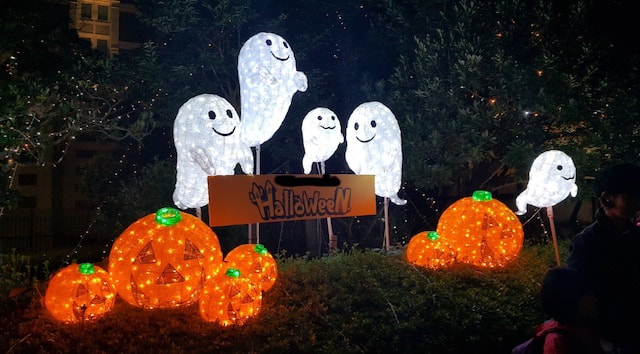
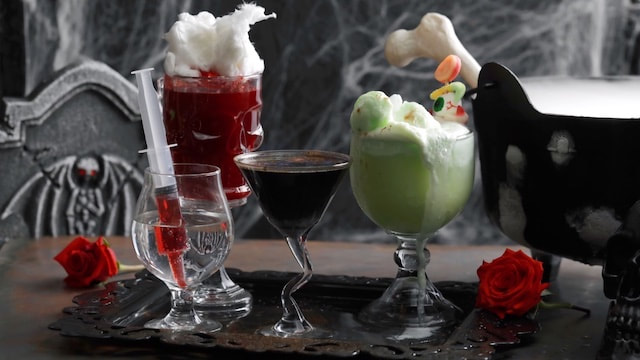
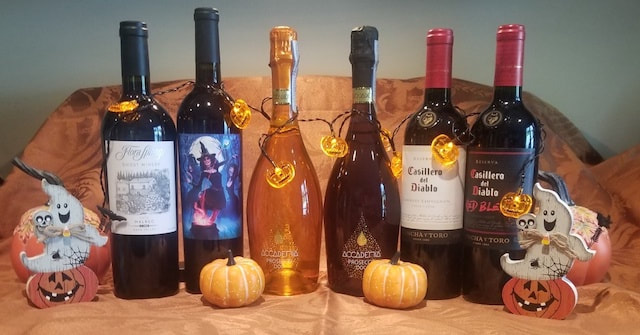
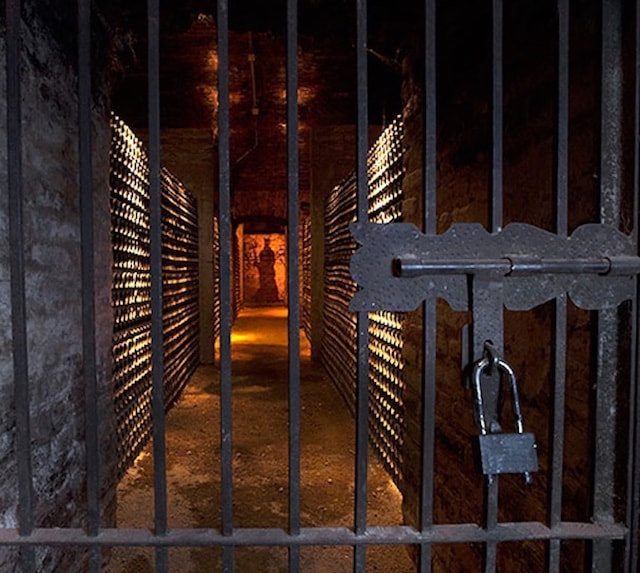
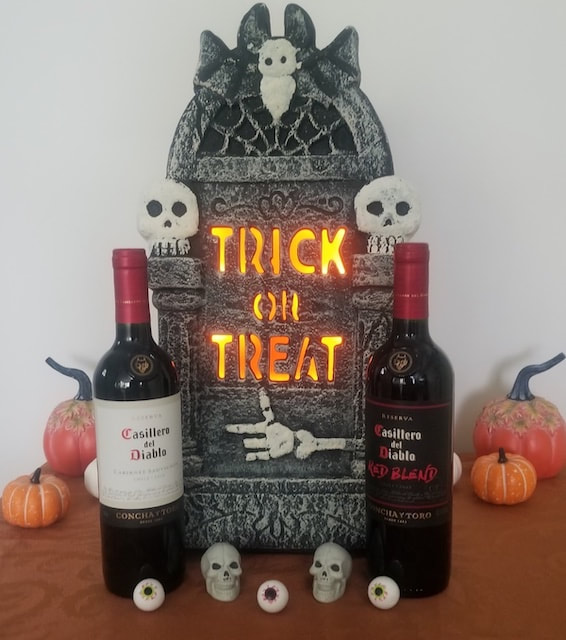
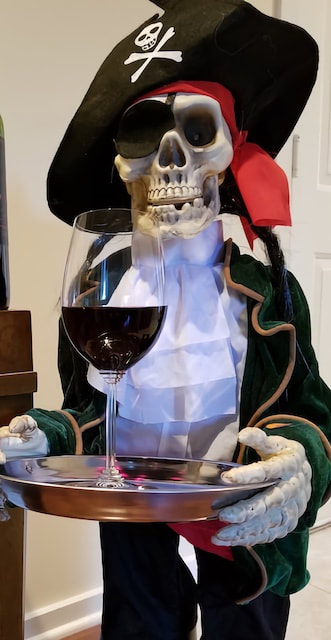
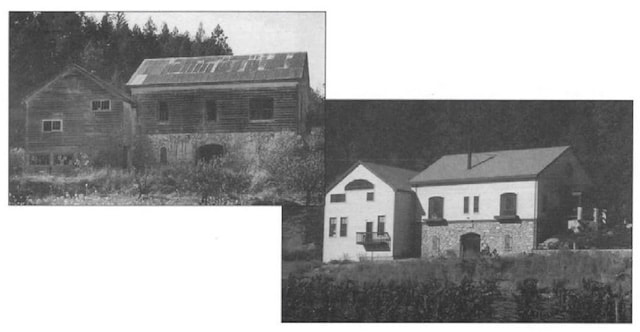
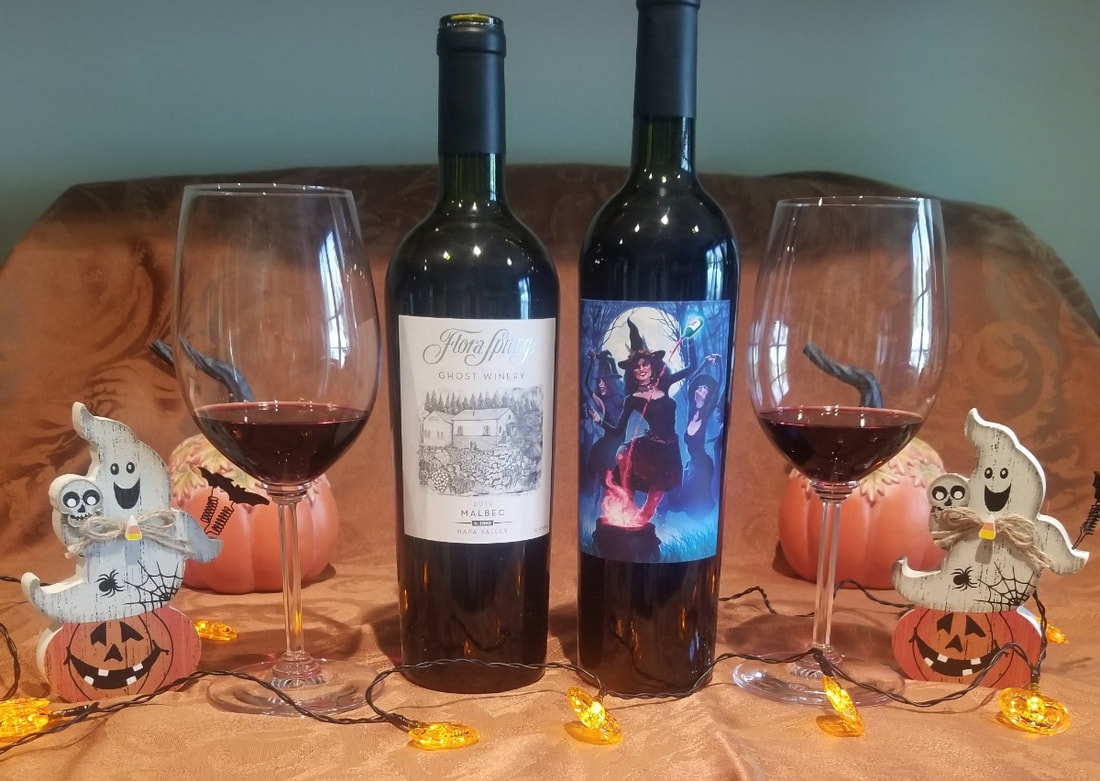
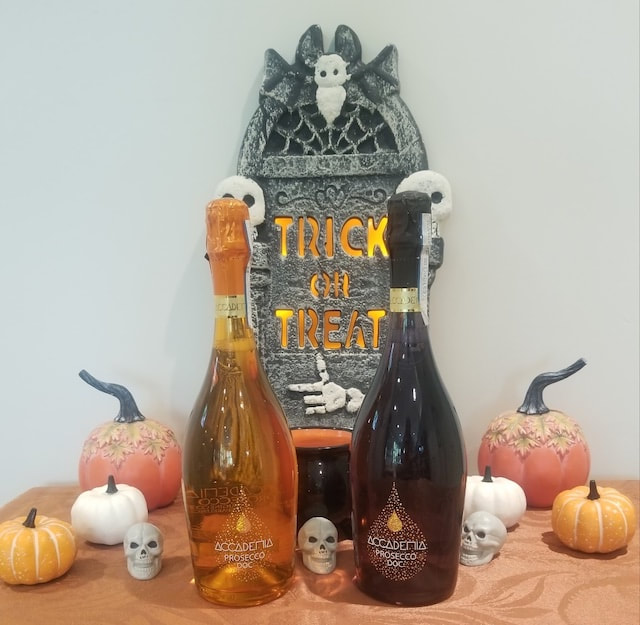
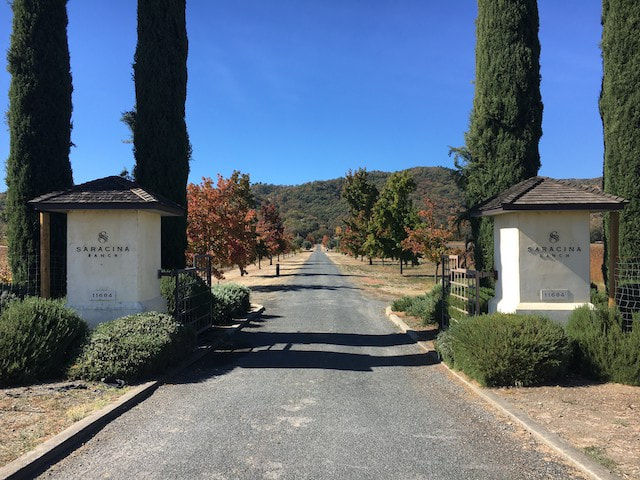
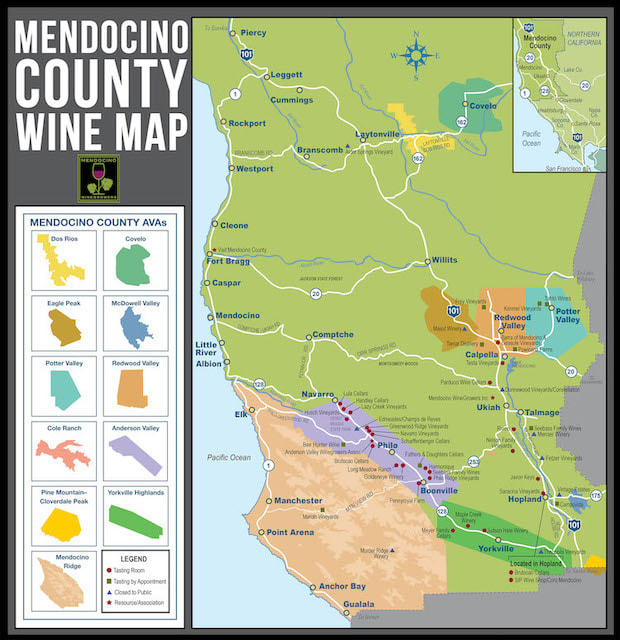
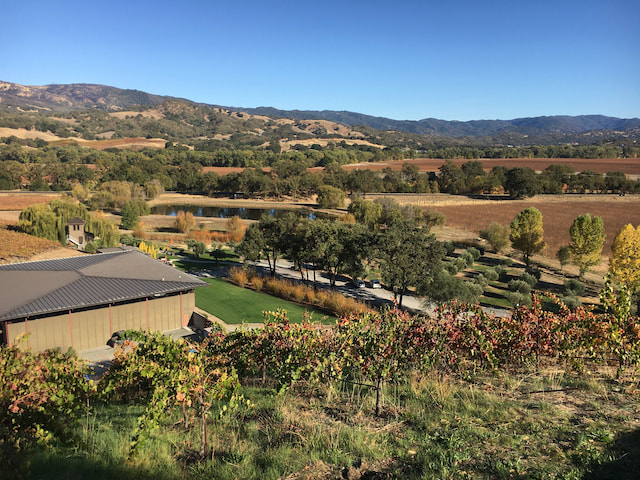
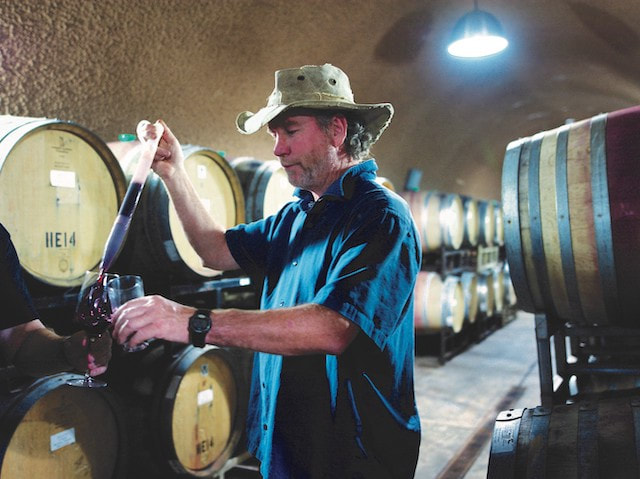
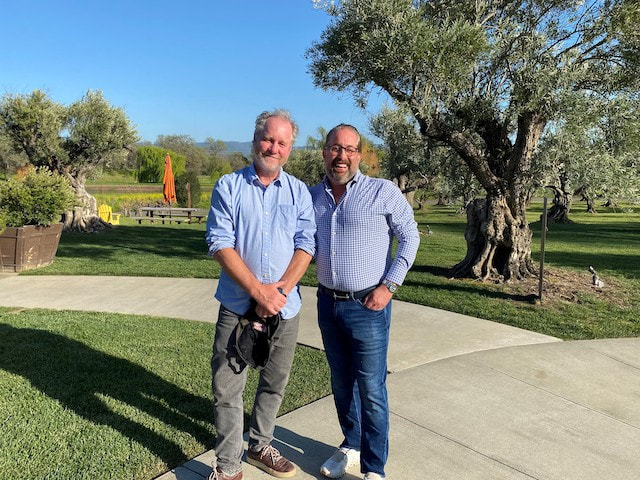
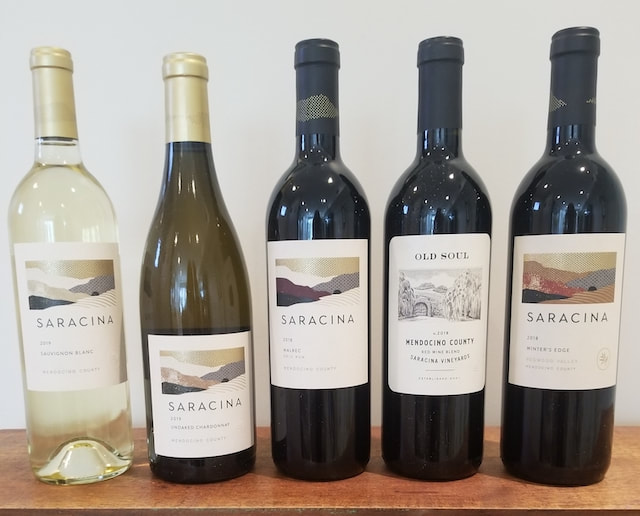
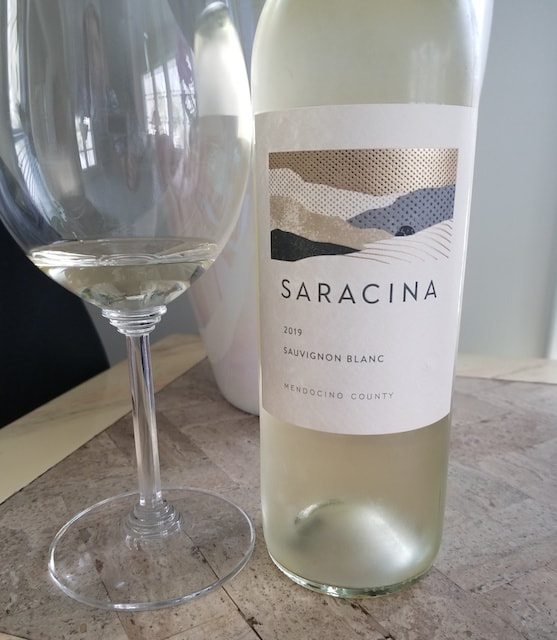
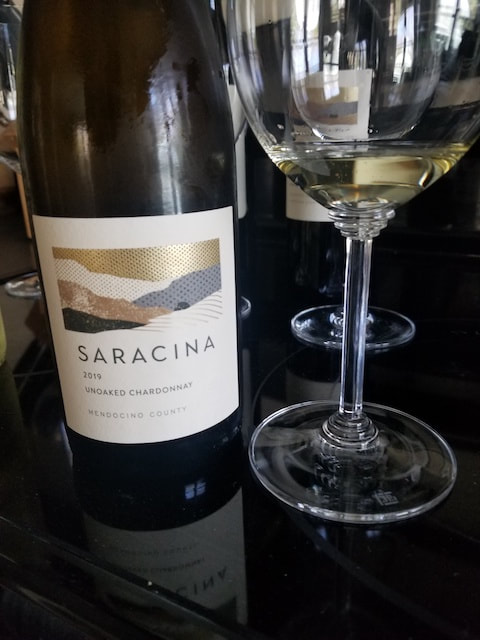
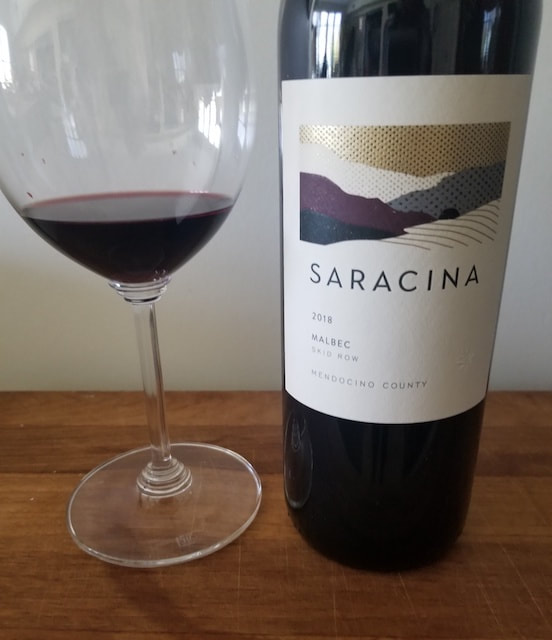
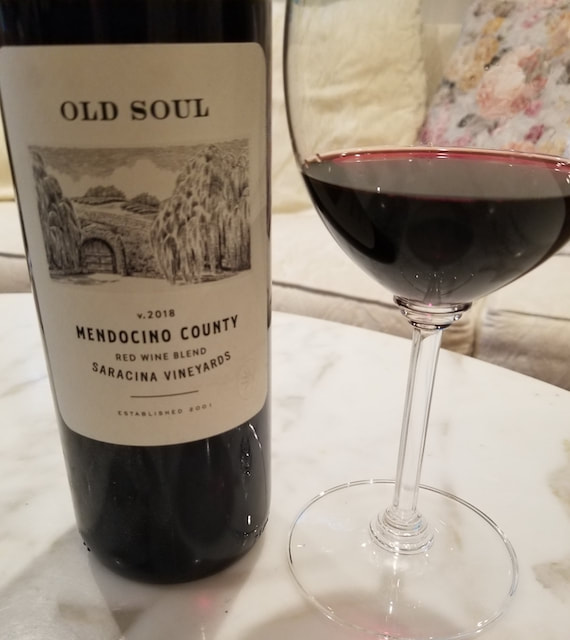
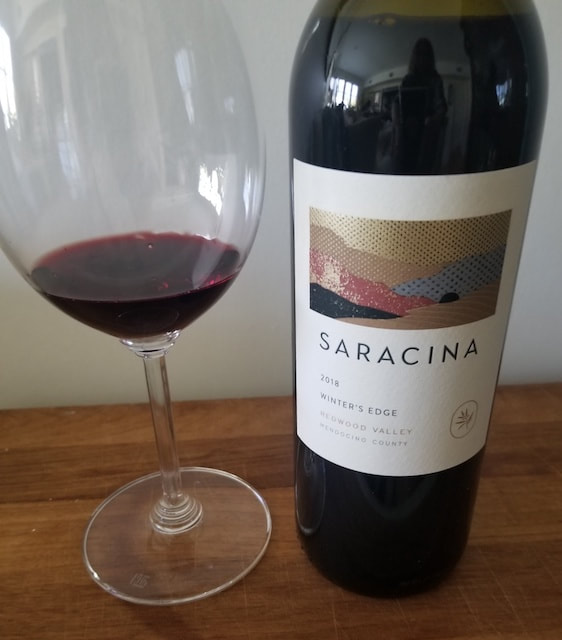
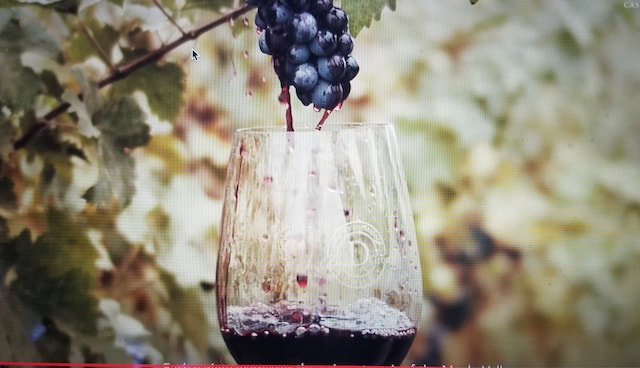
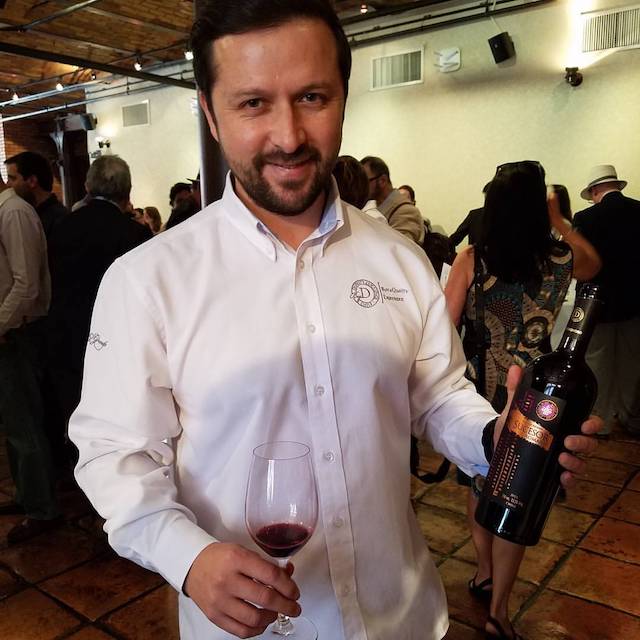
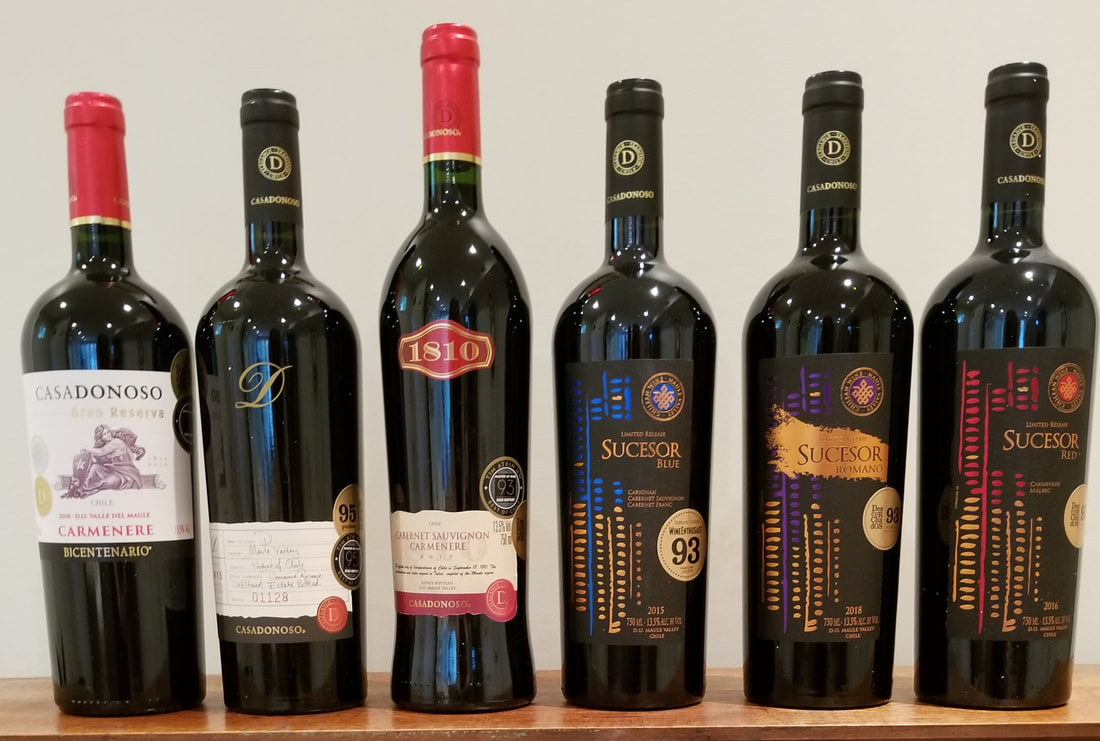
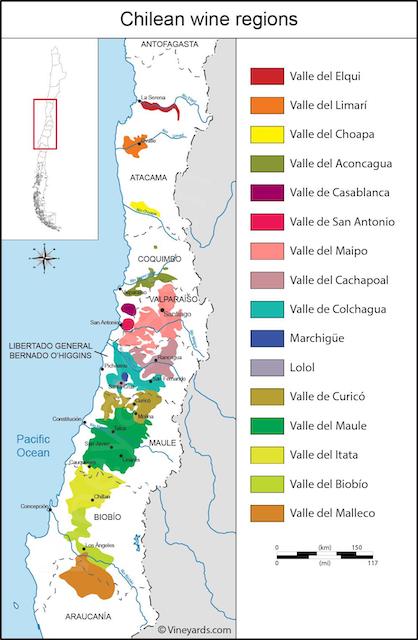
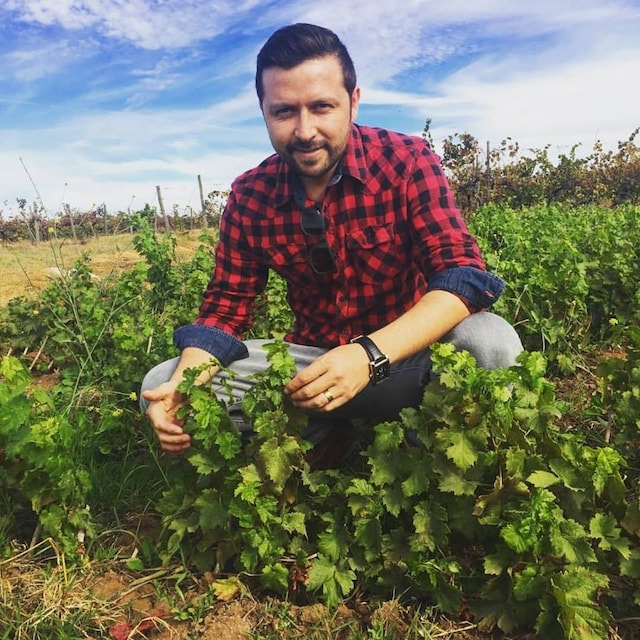
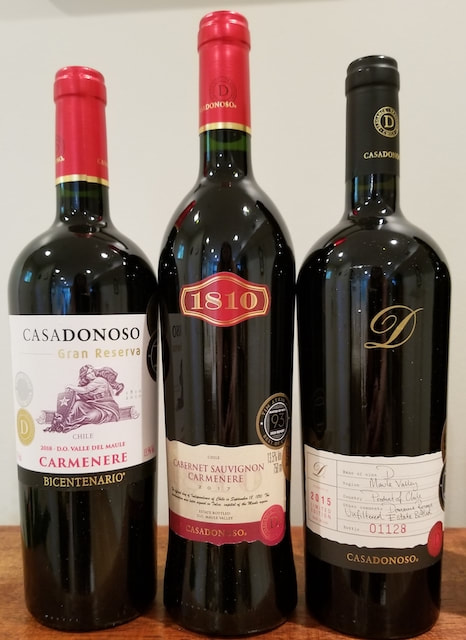
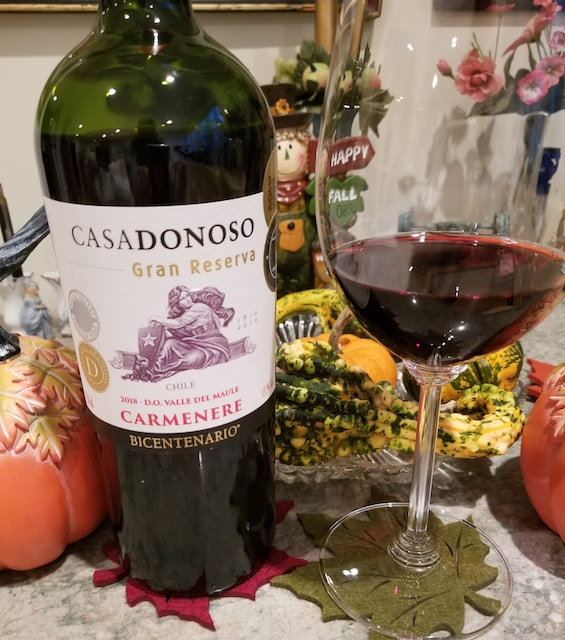
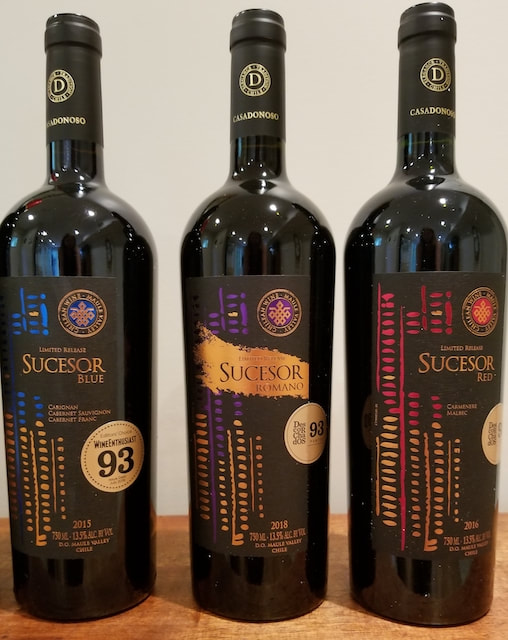
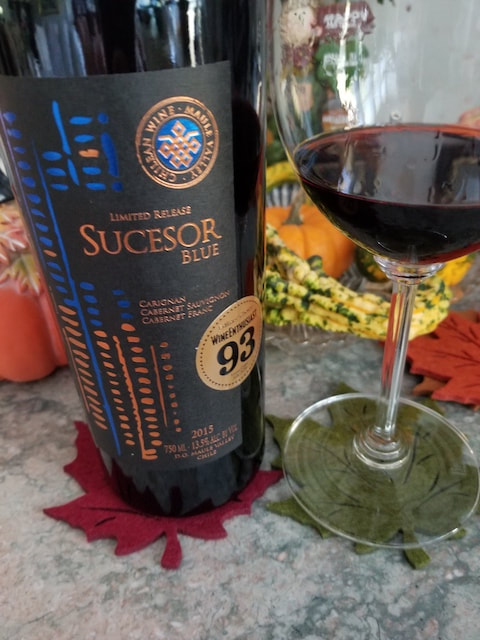
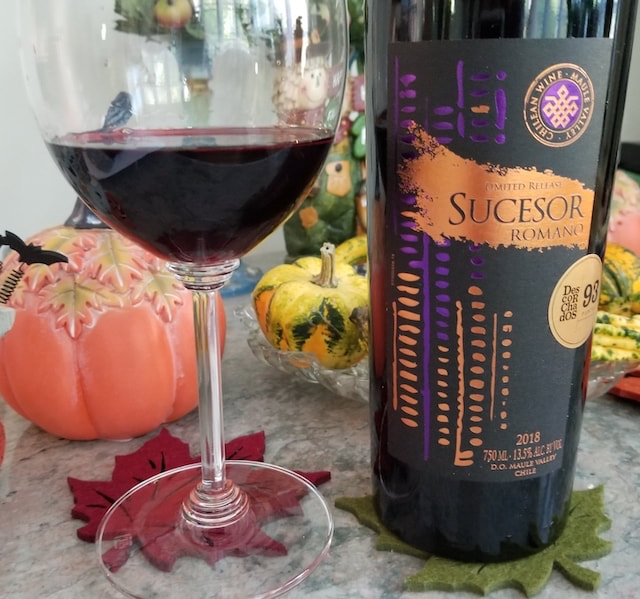
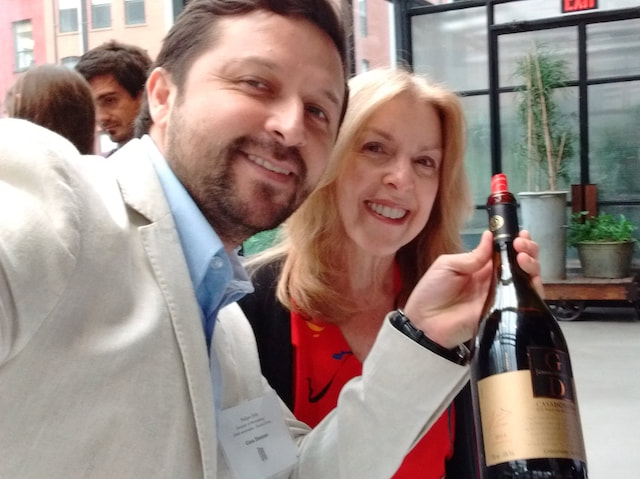
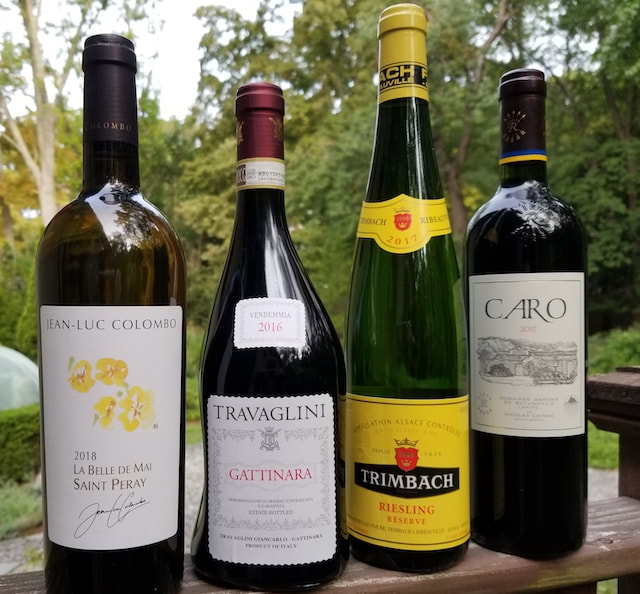
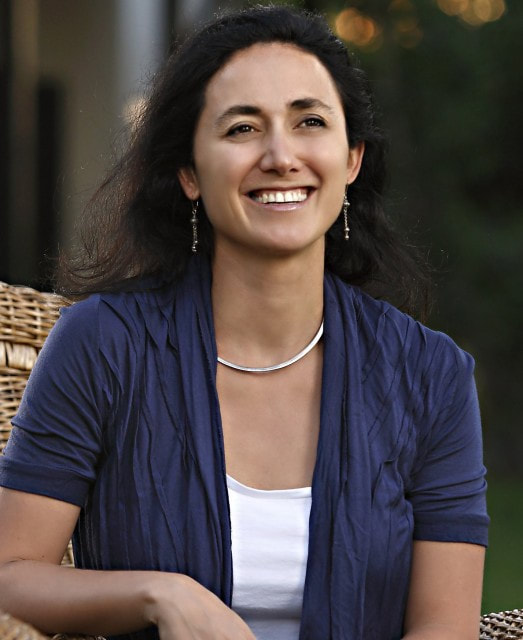
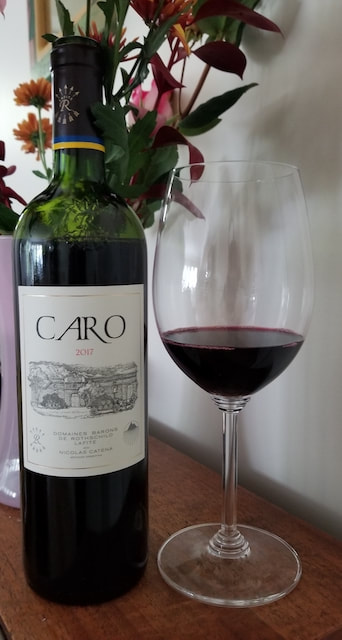
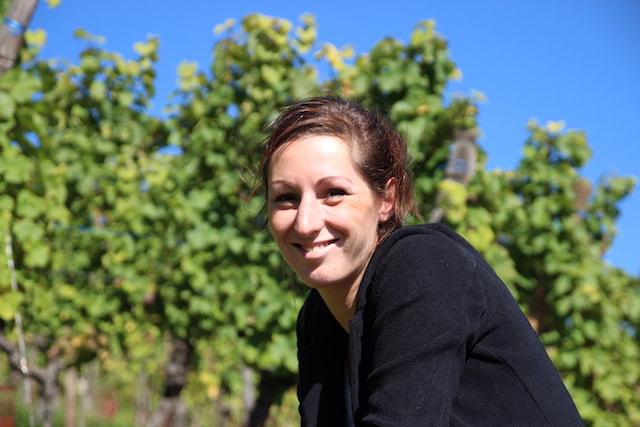
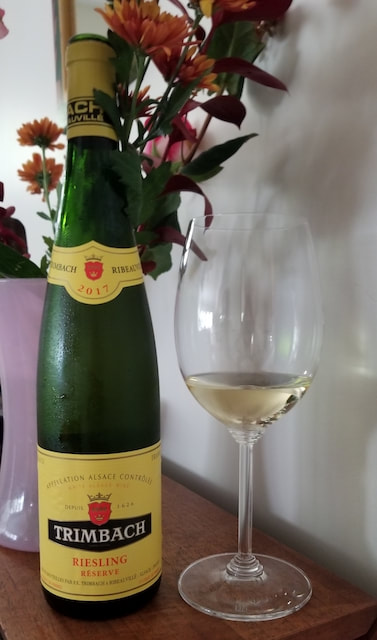
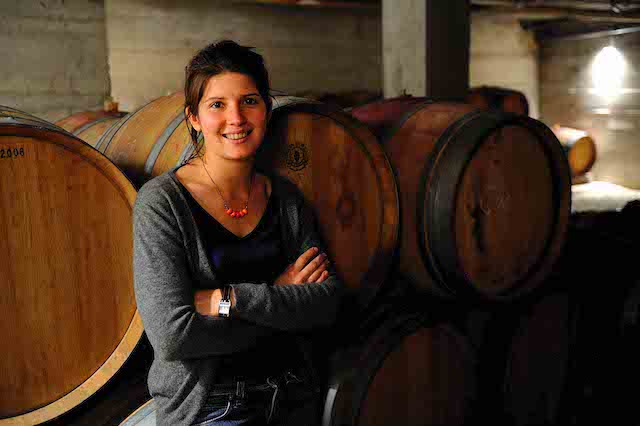
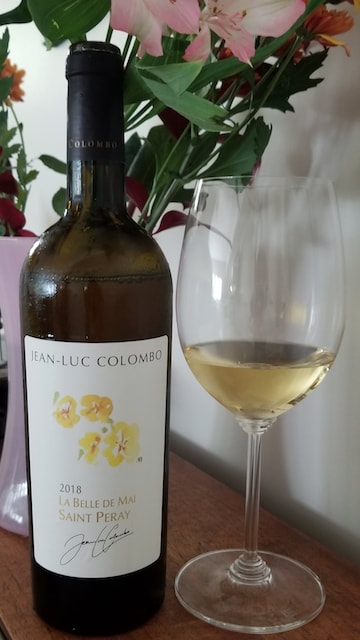
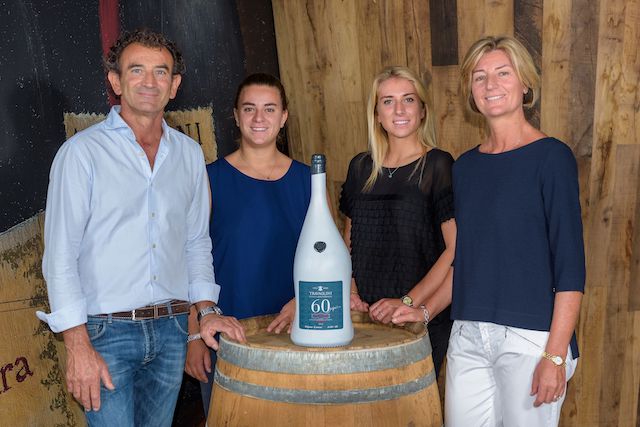
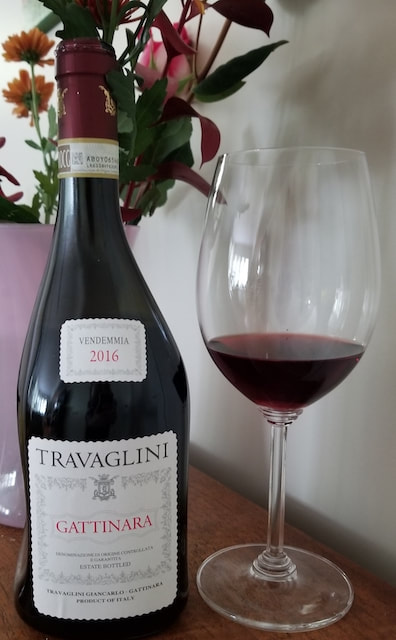
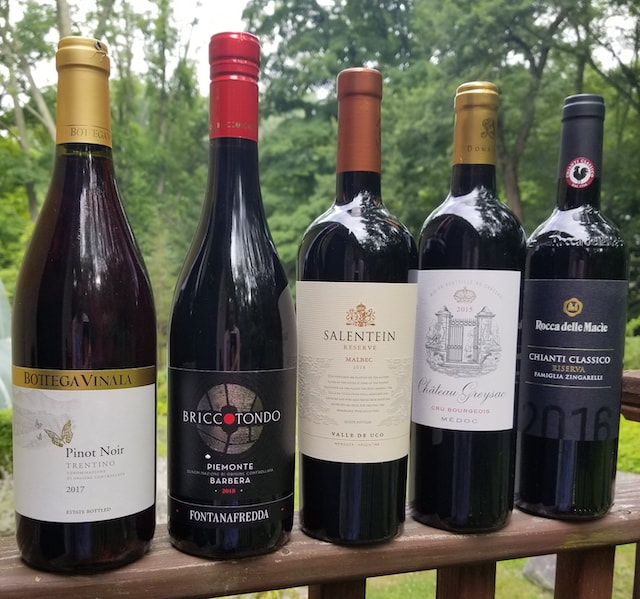
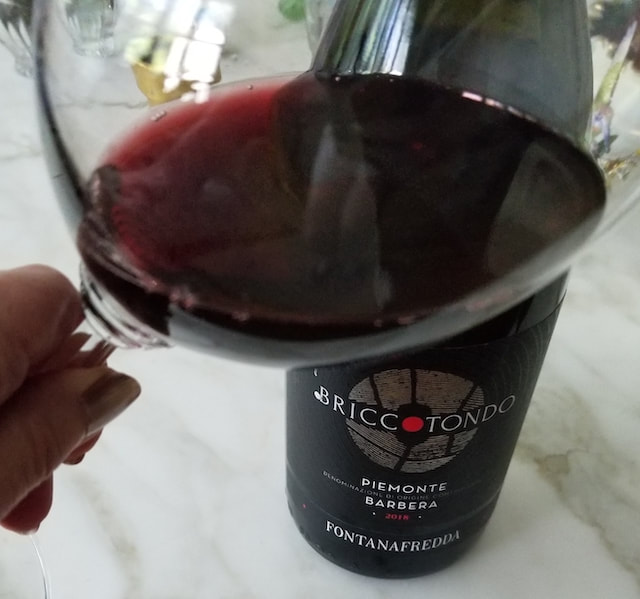
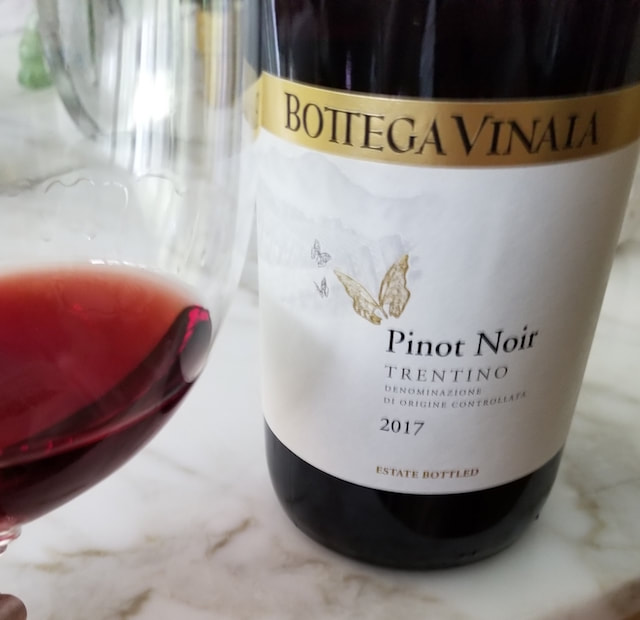
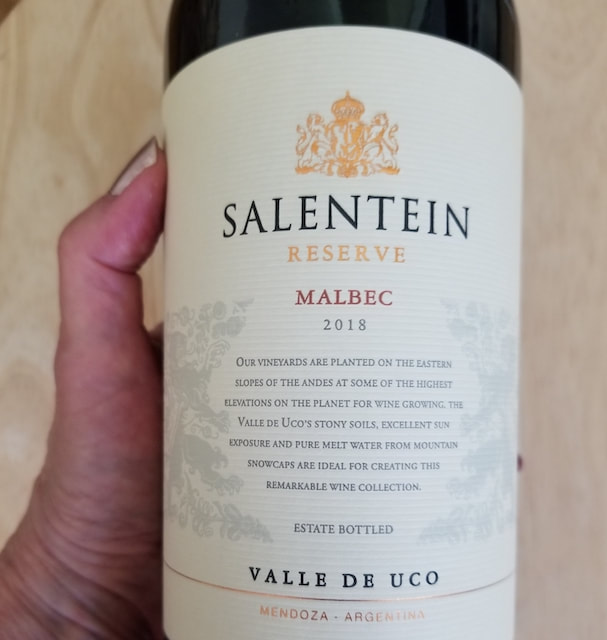
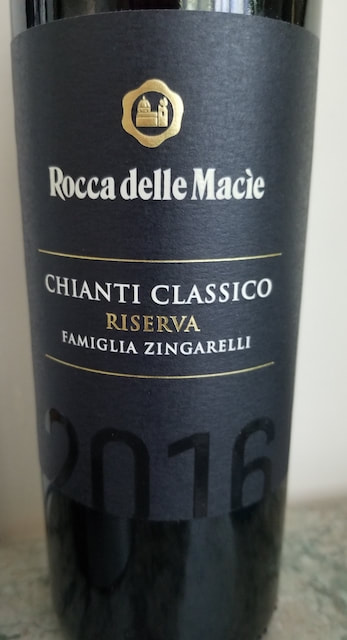
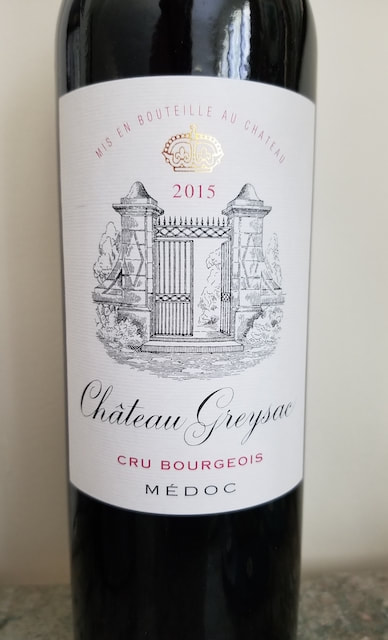
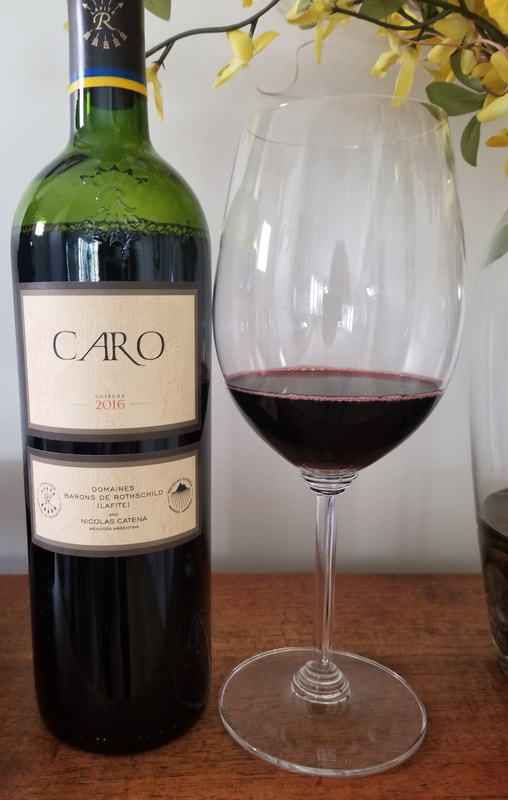
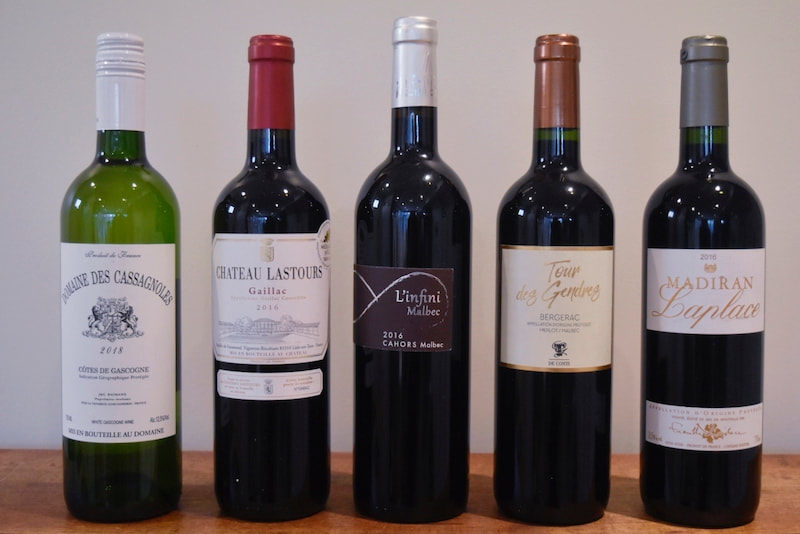
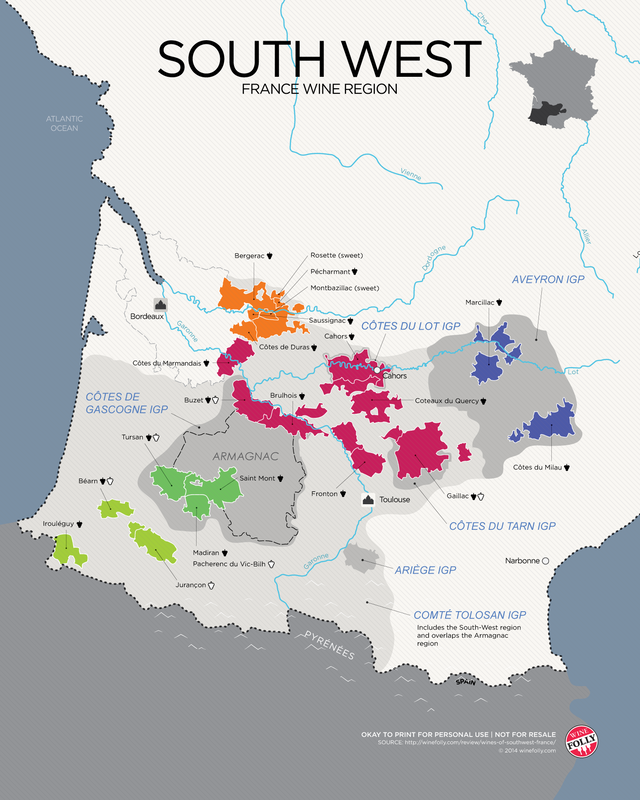
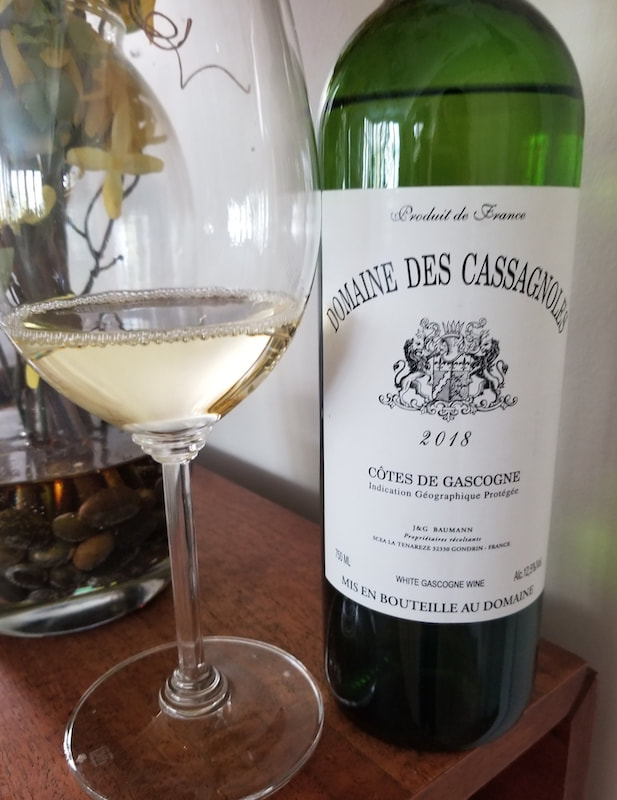
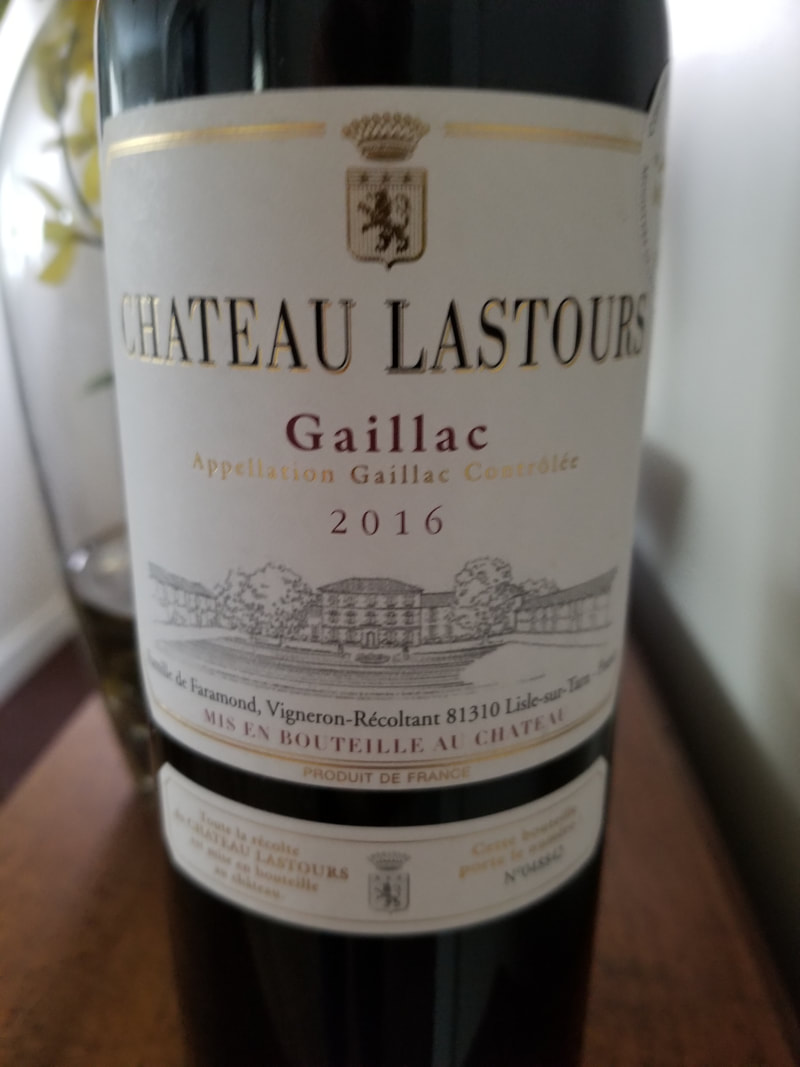
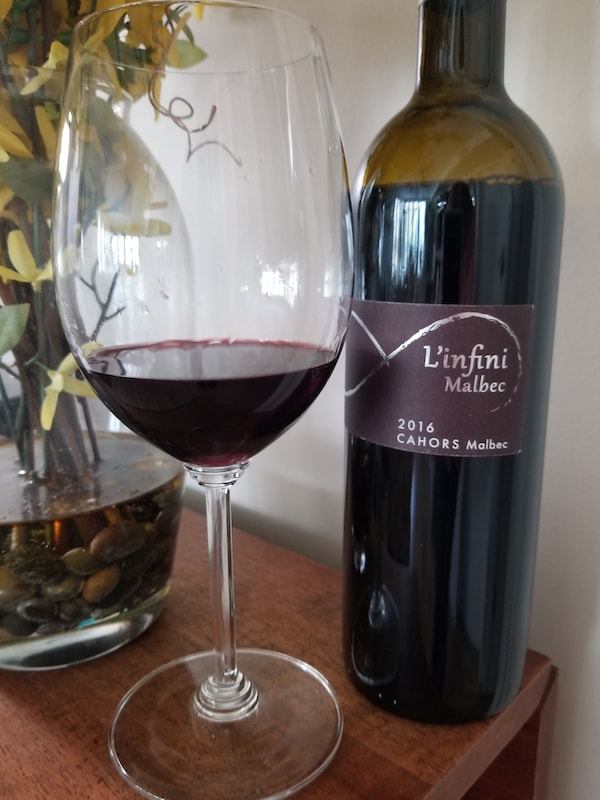
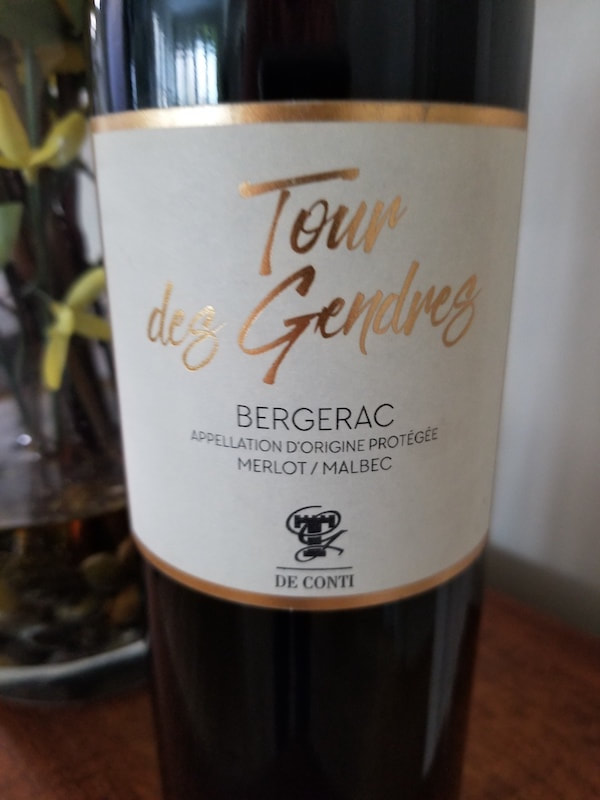
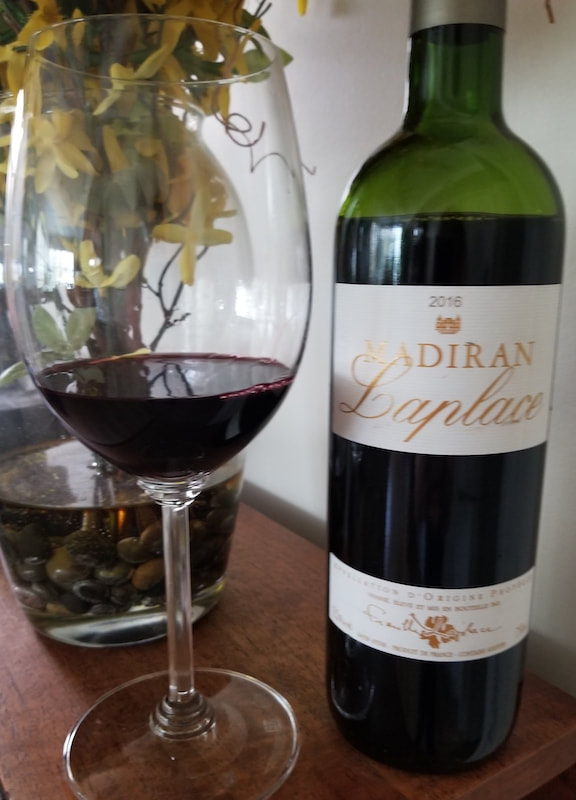
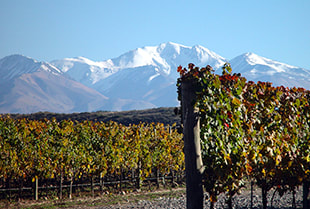
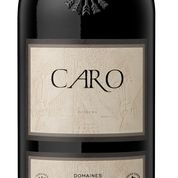
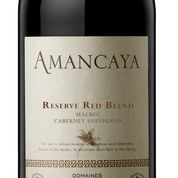
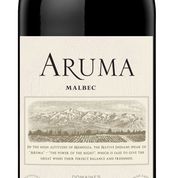
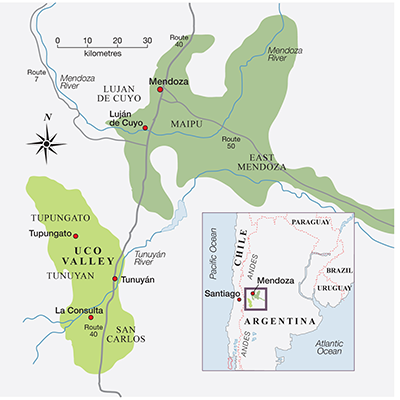
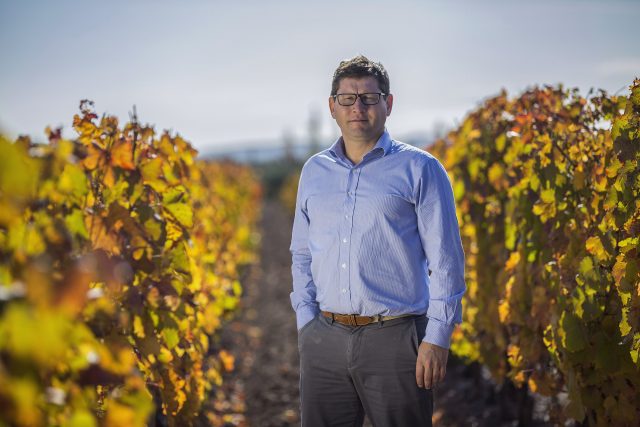
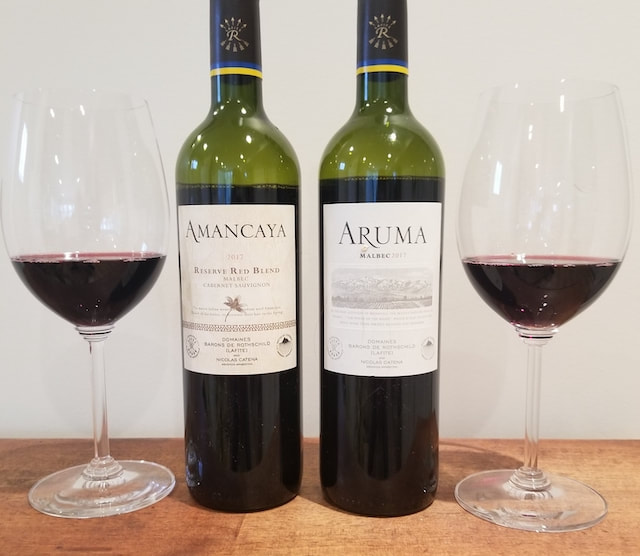
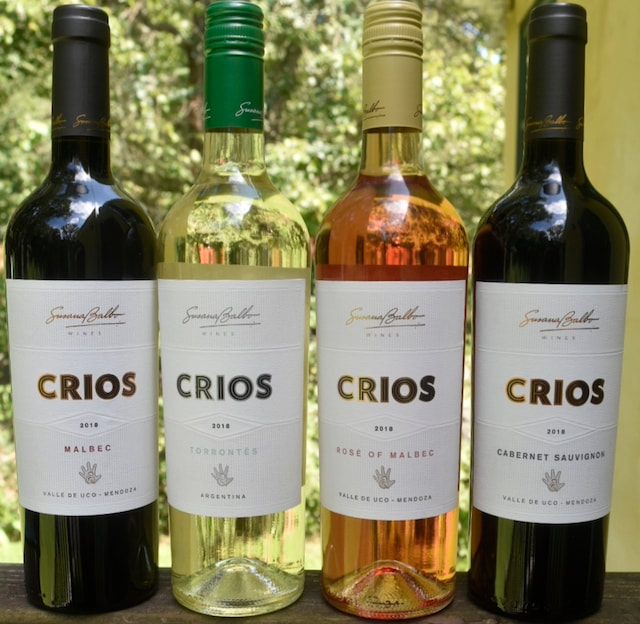
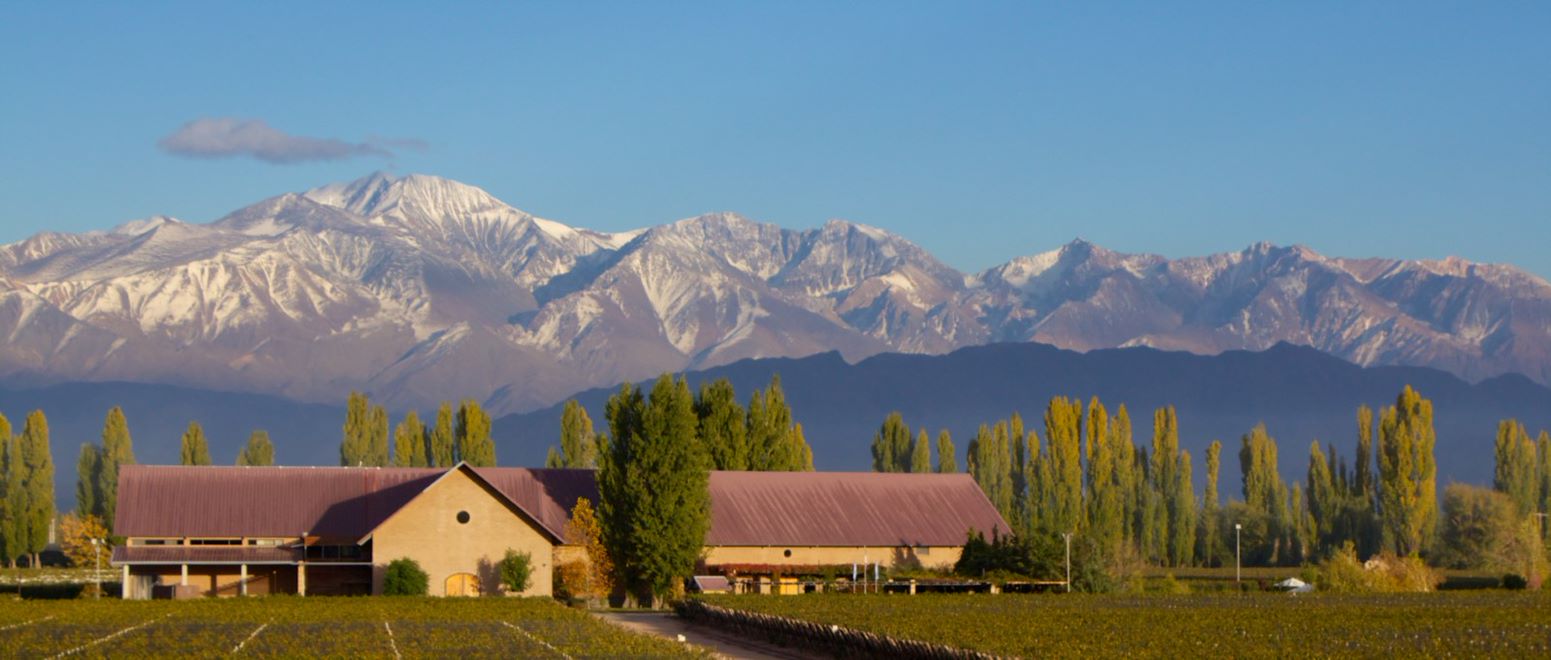
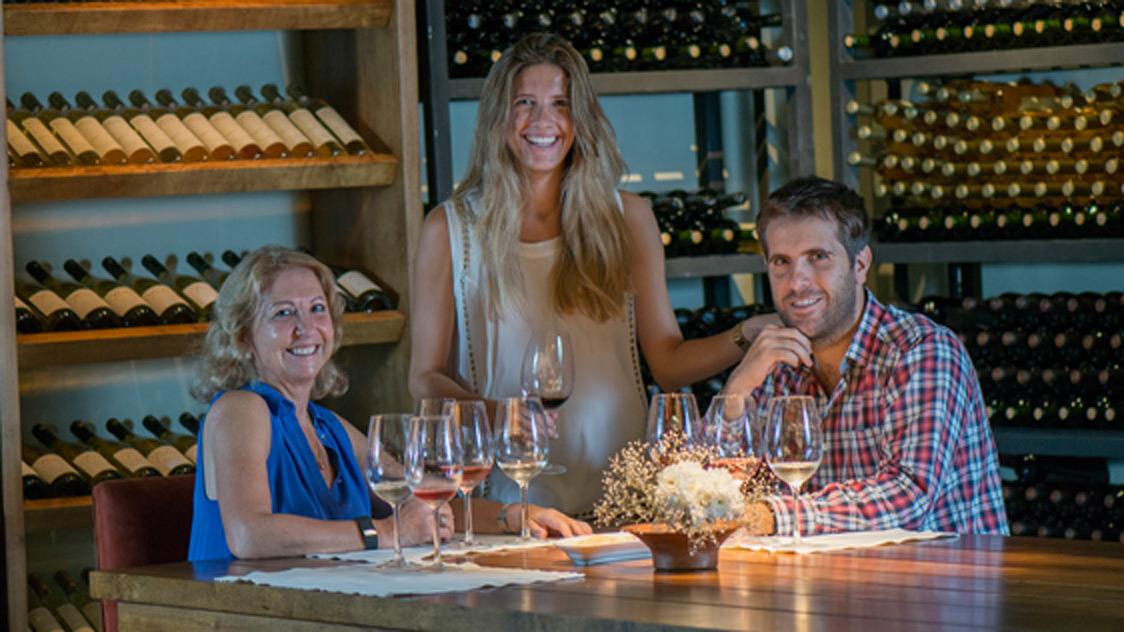
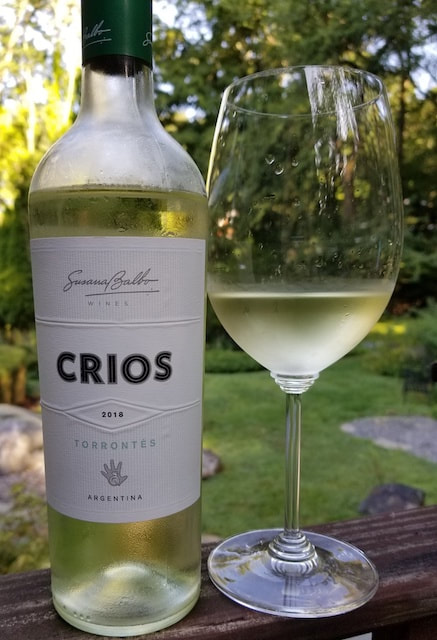

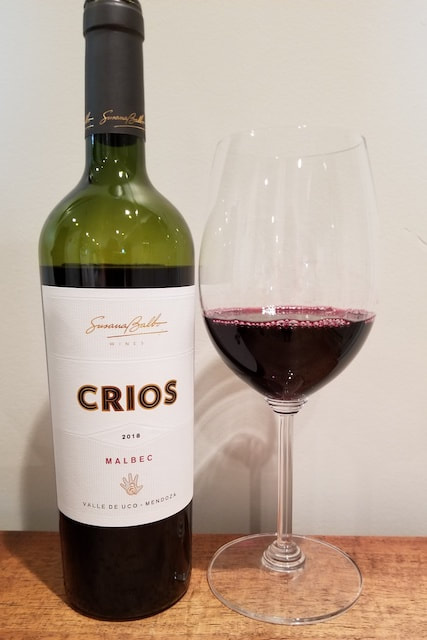
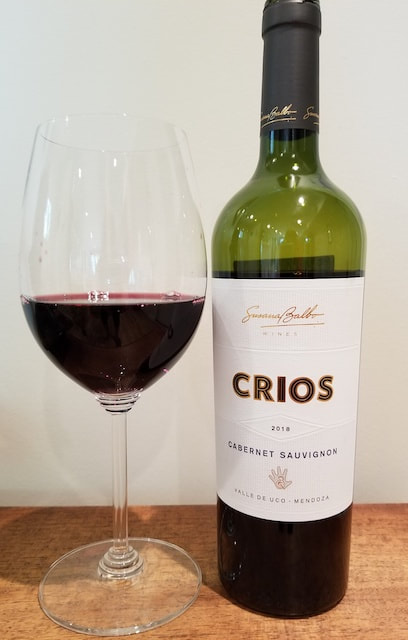
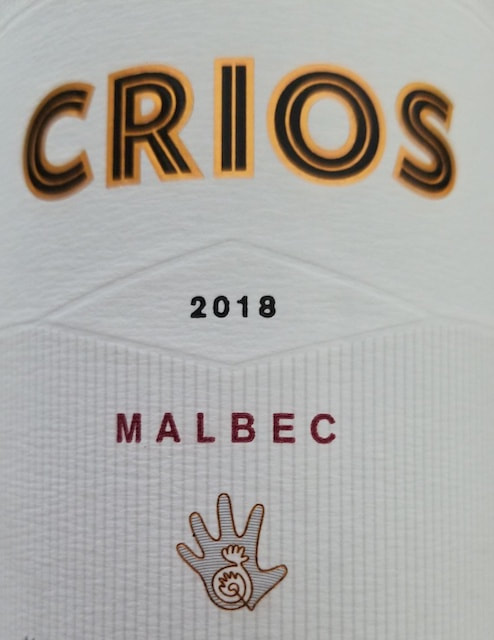
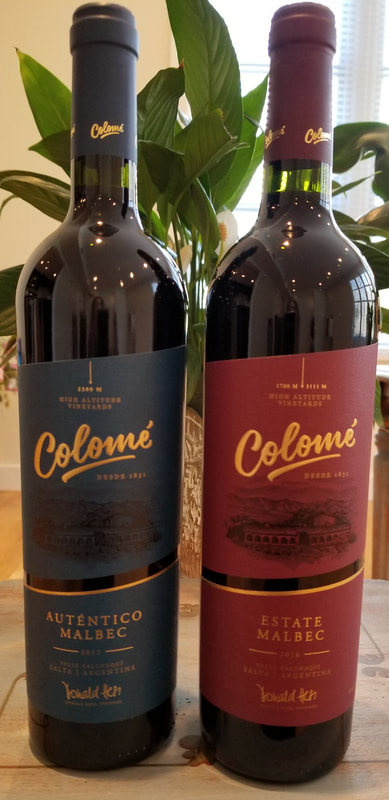
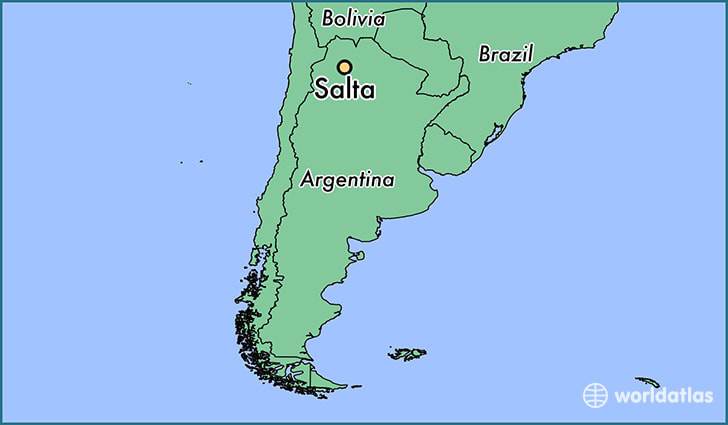
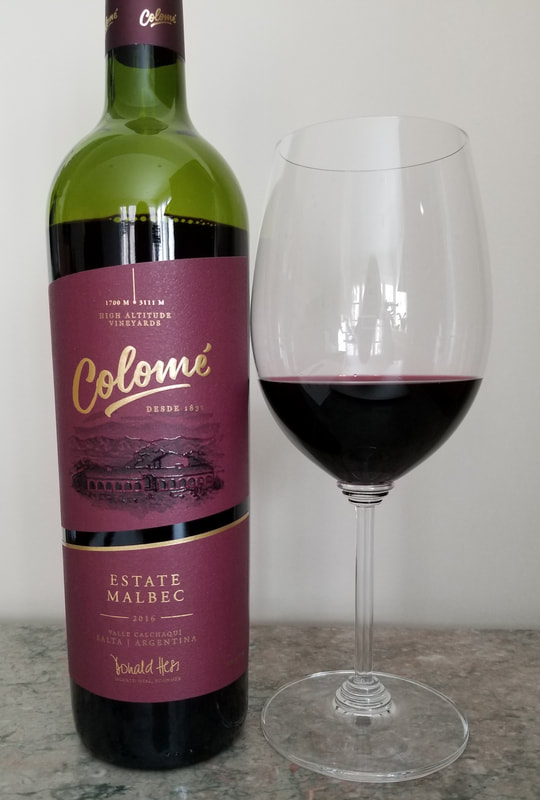
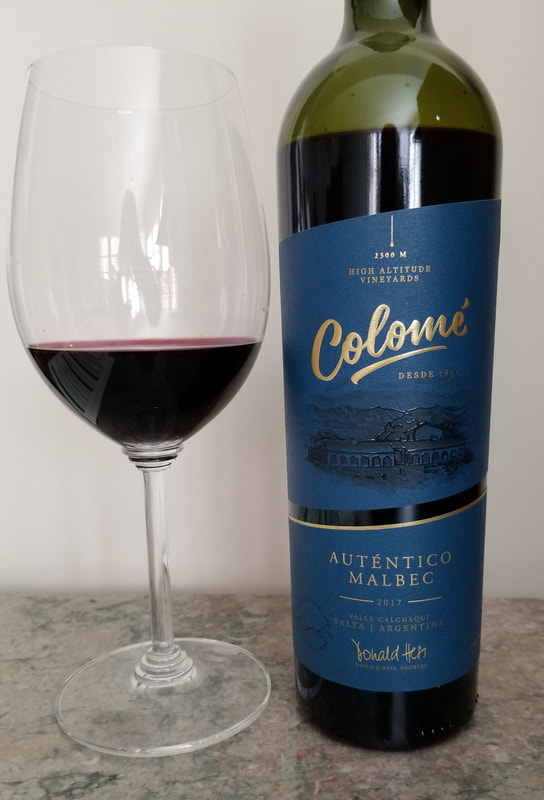
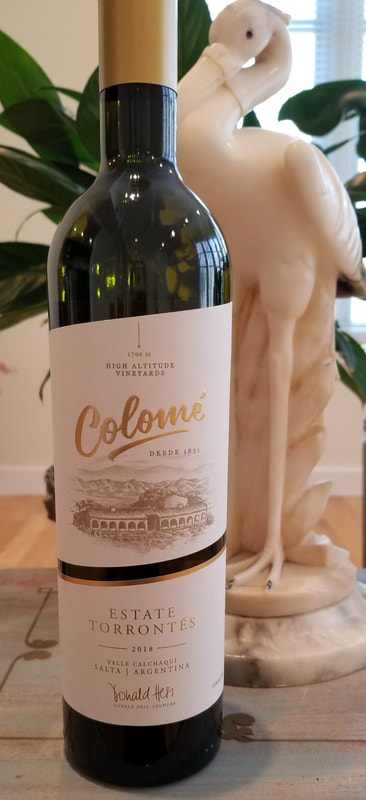
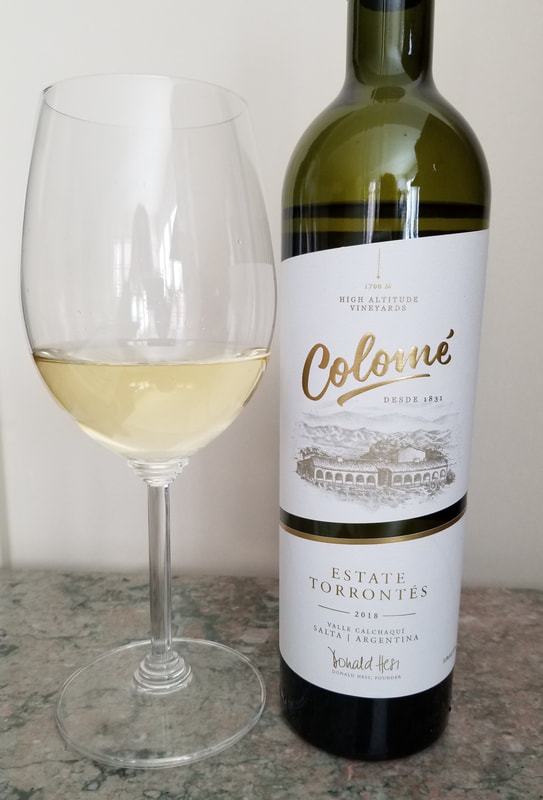
 RSS Feed
RSS Feed